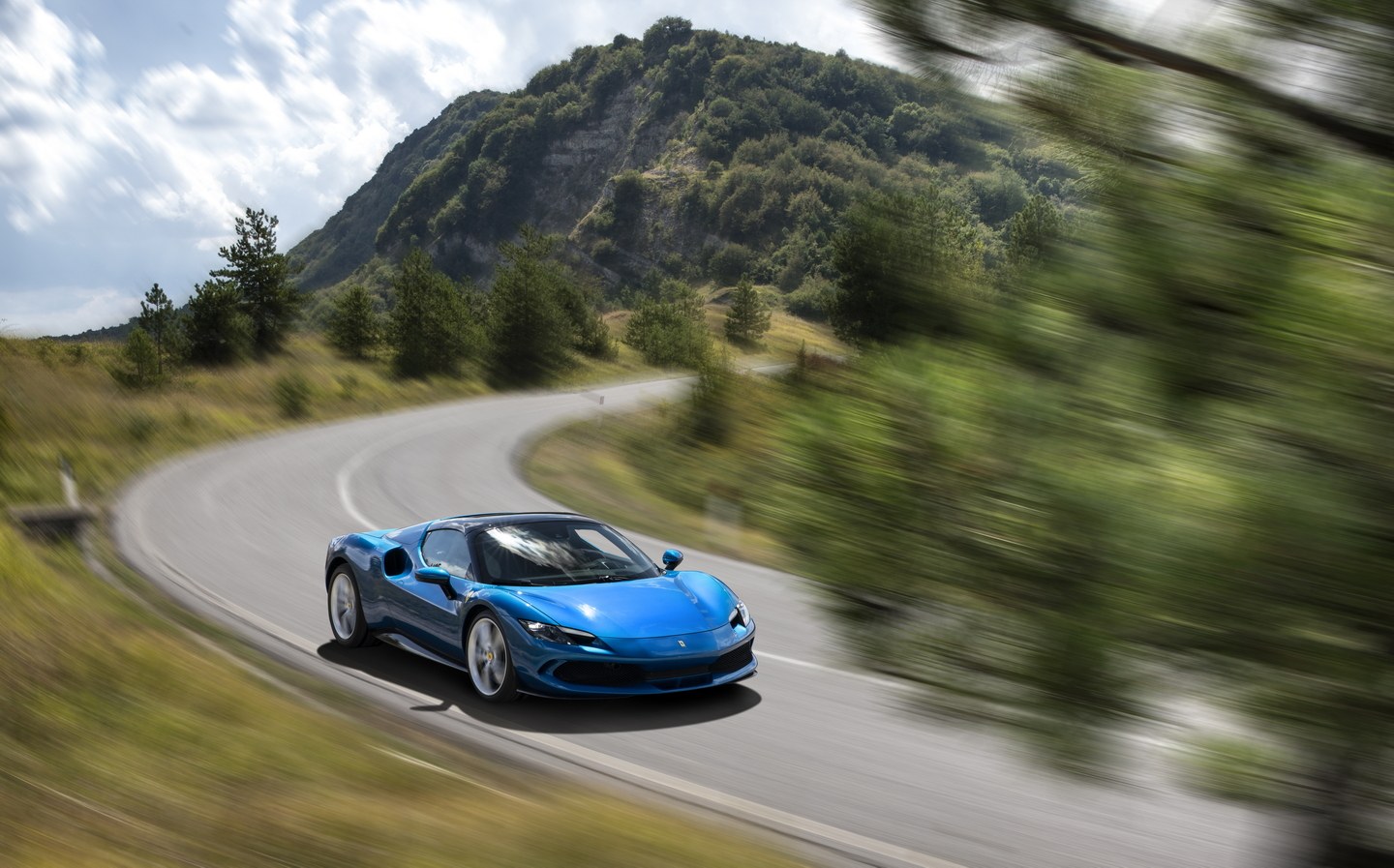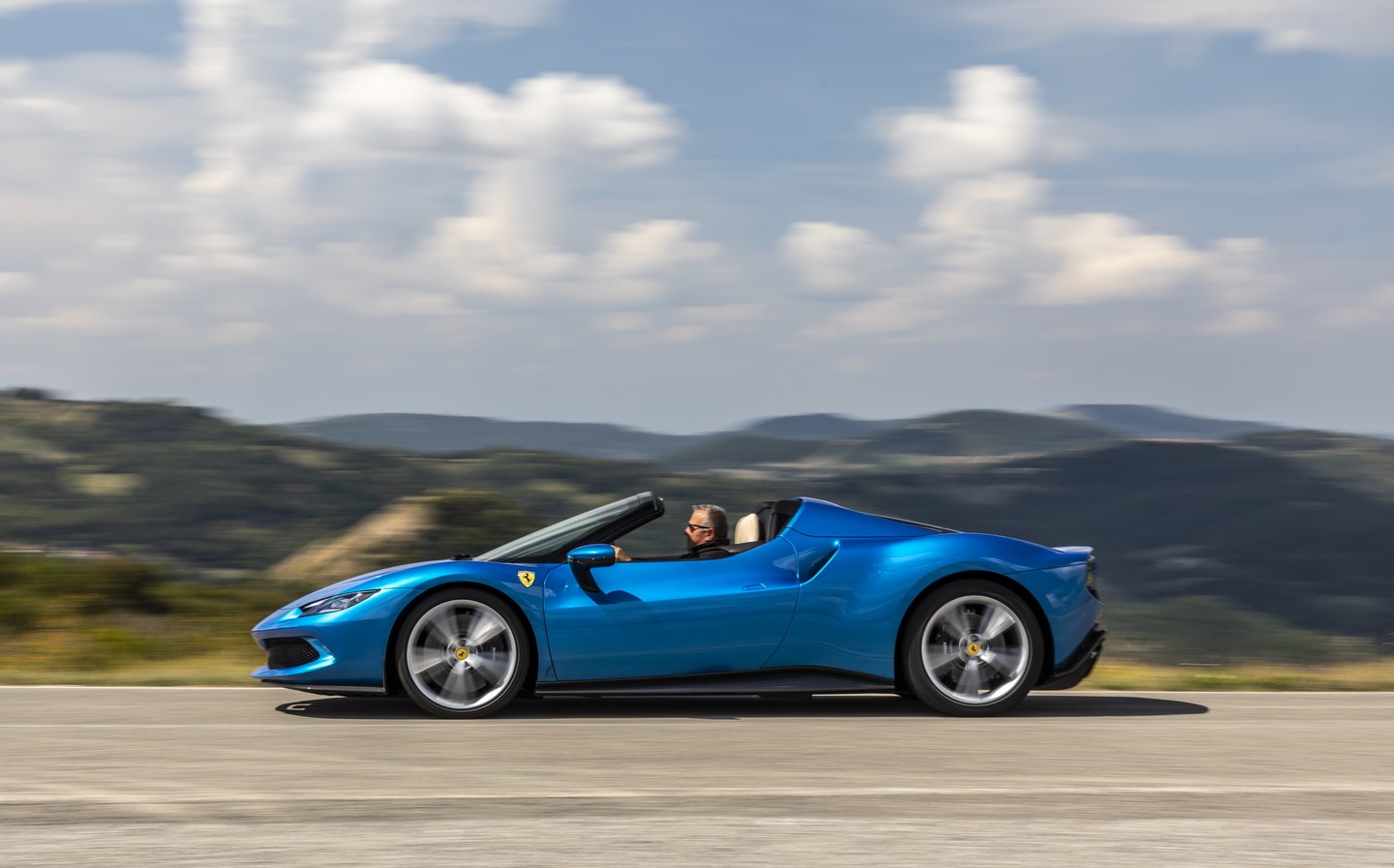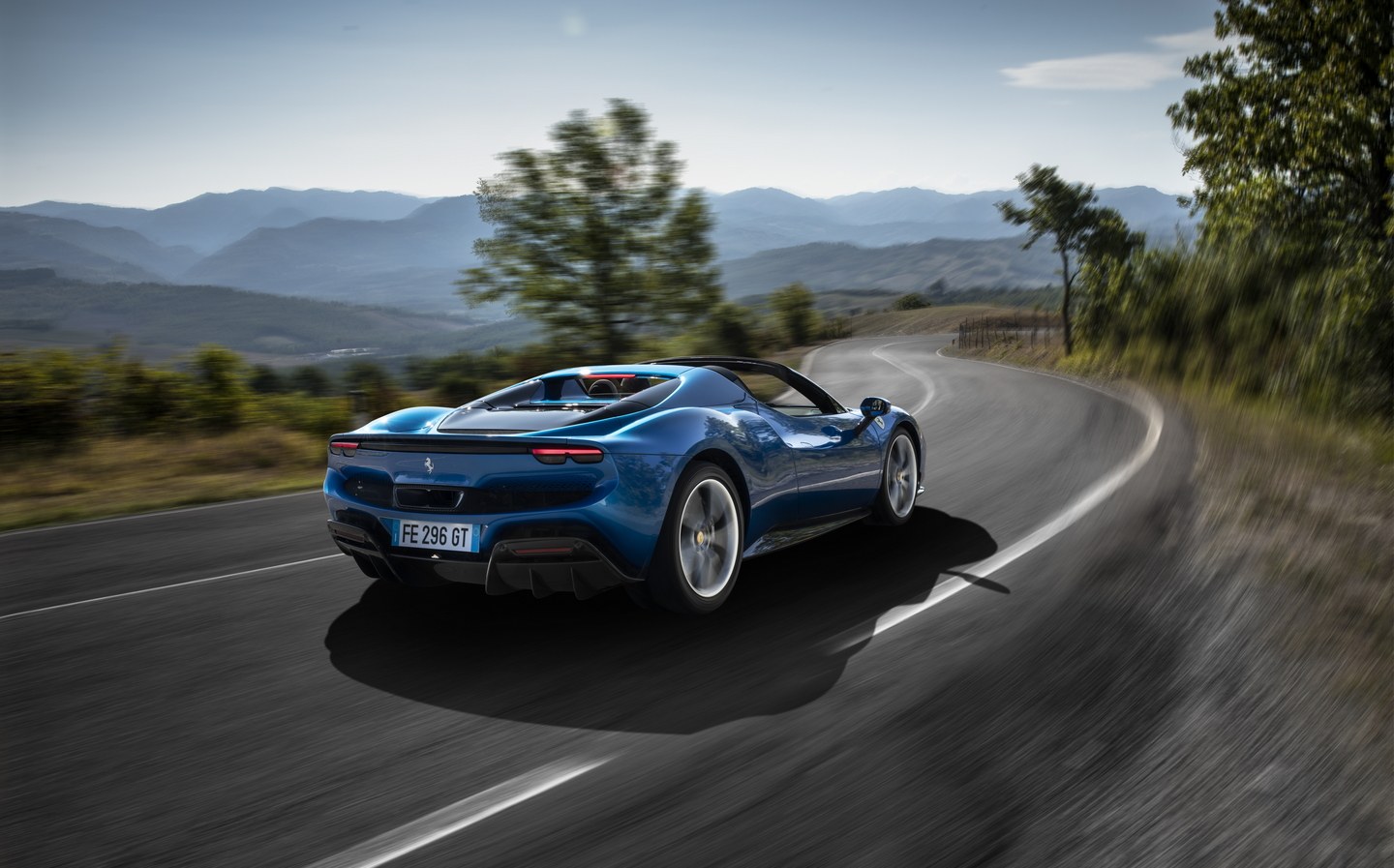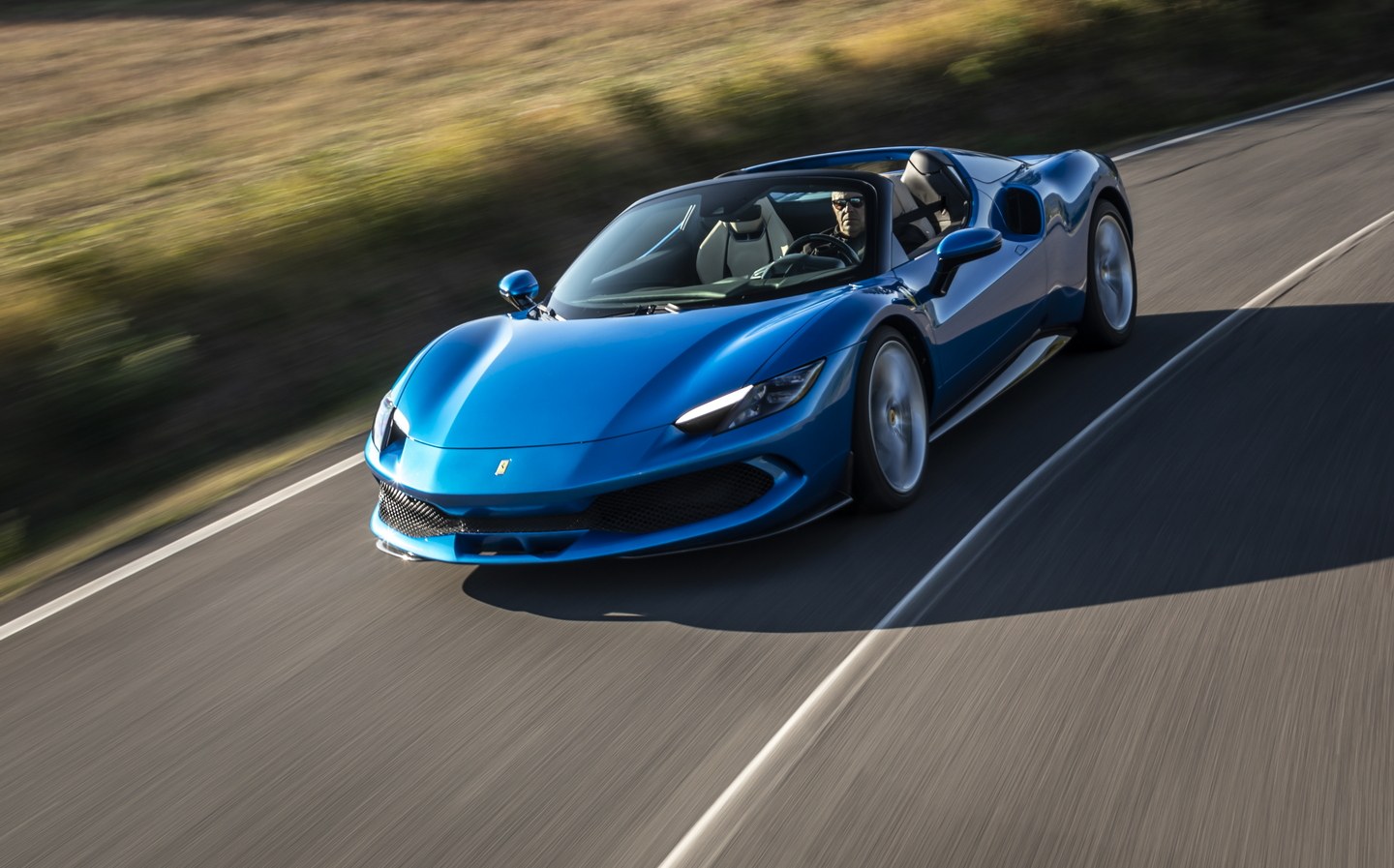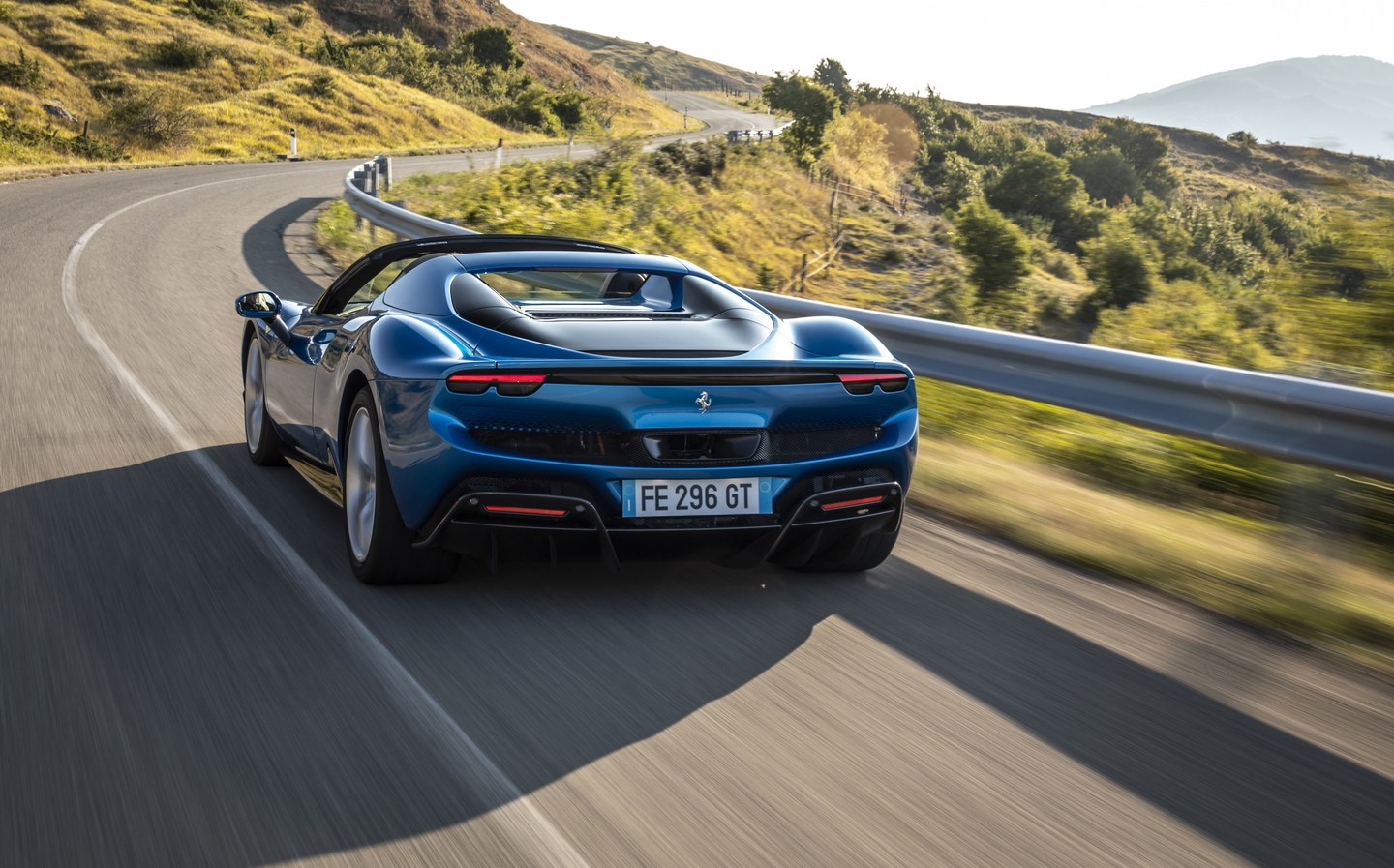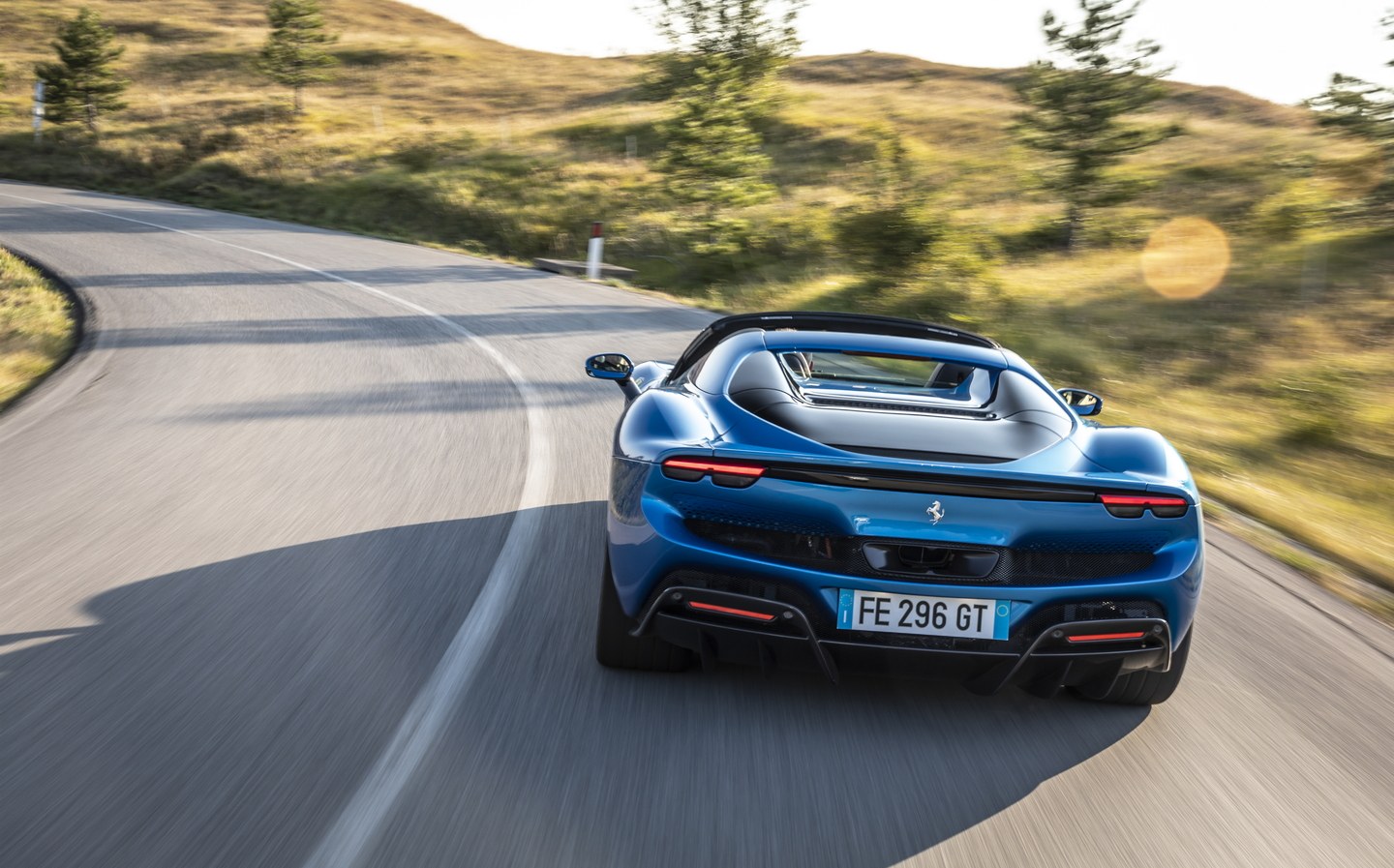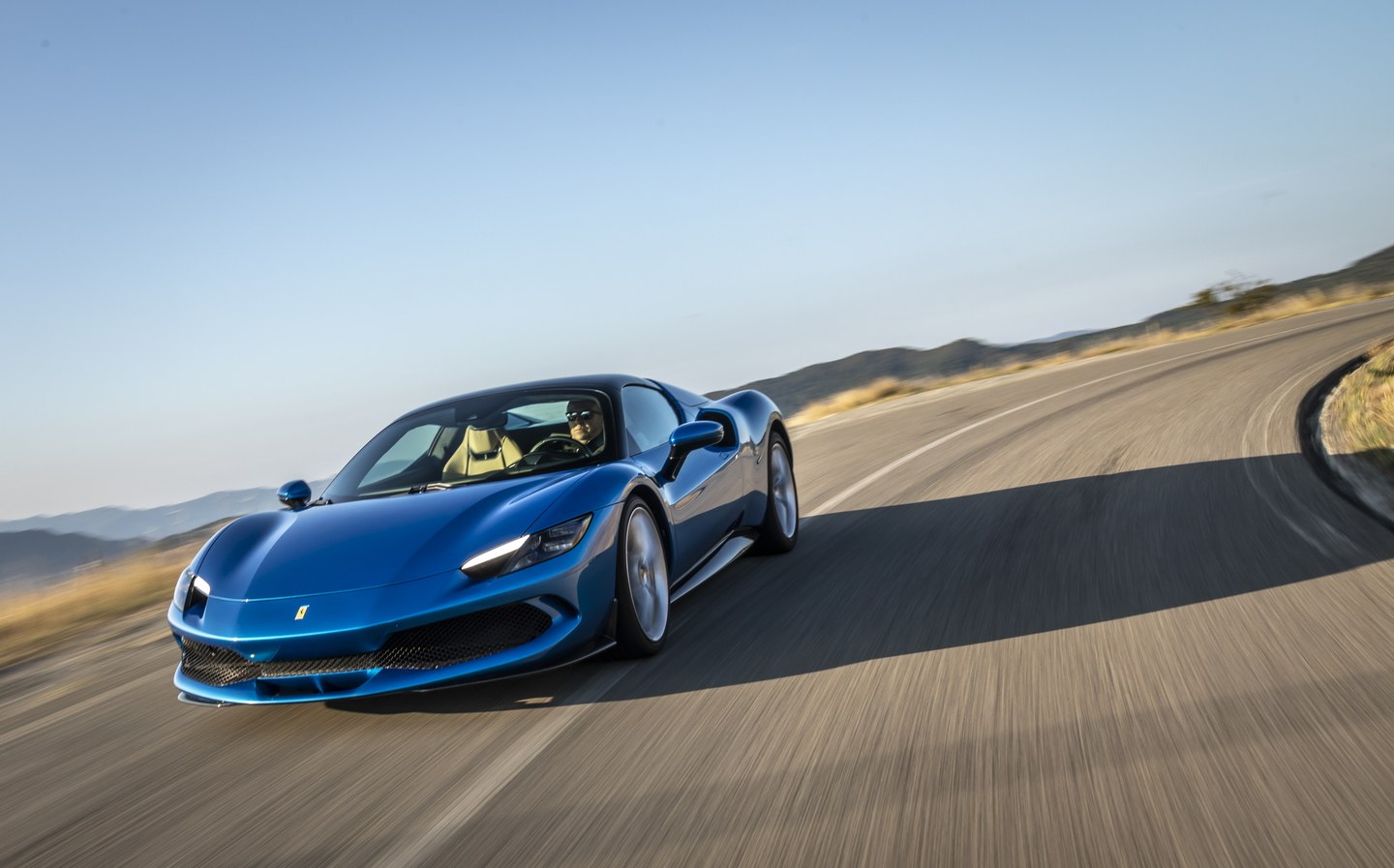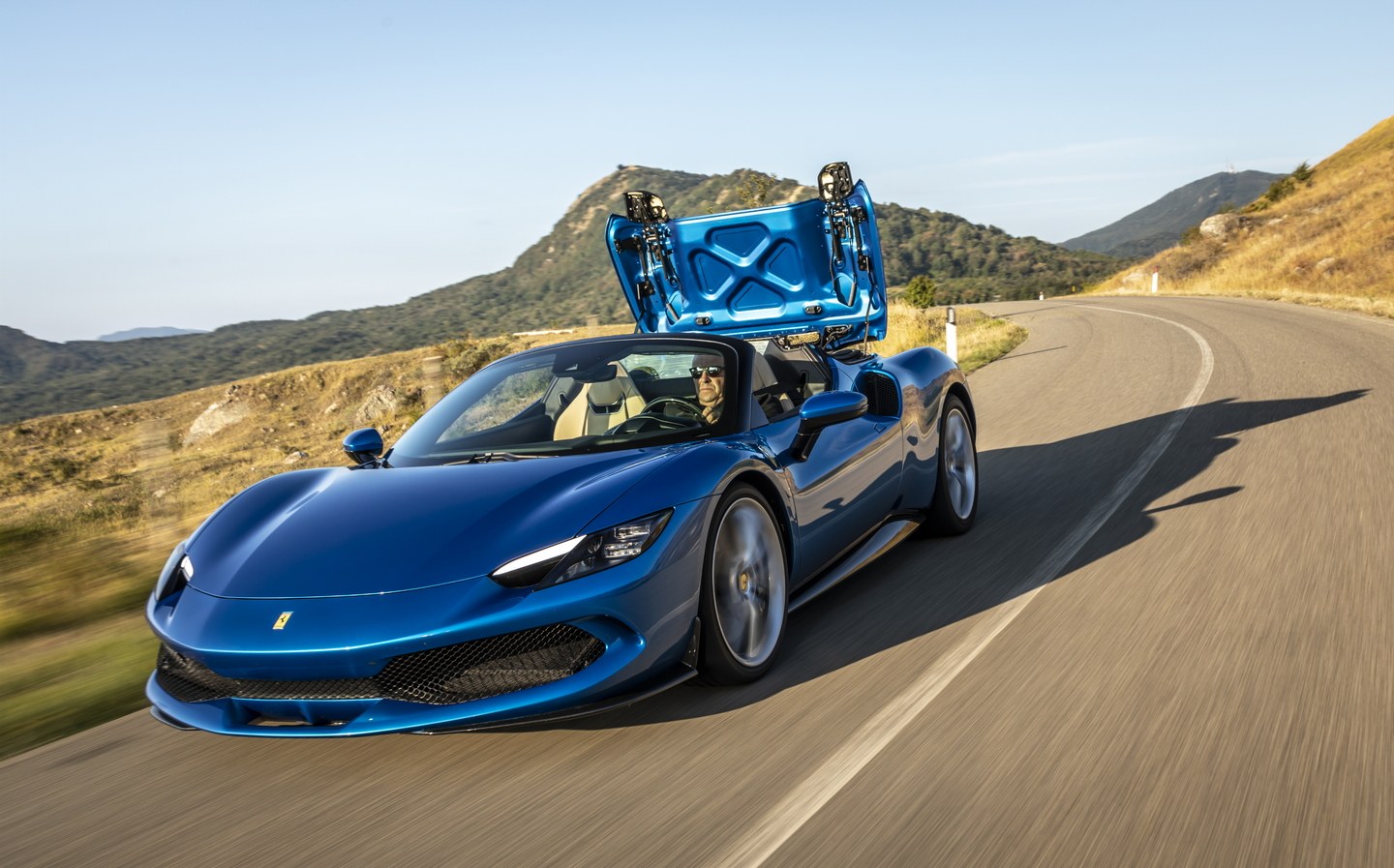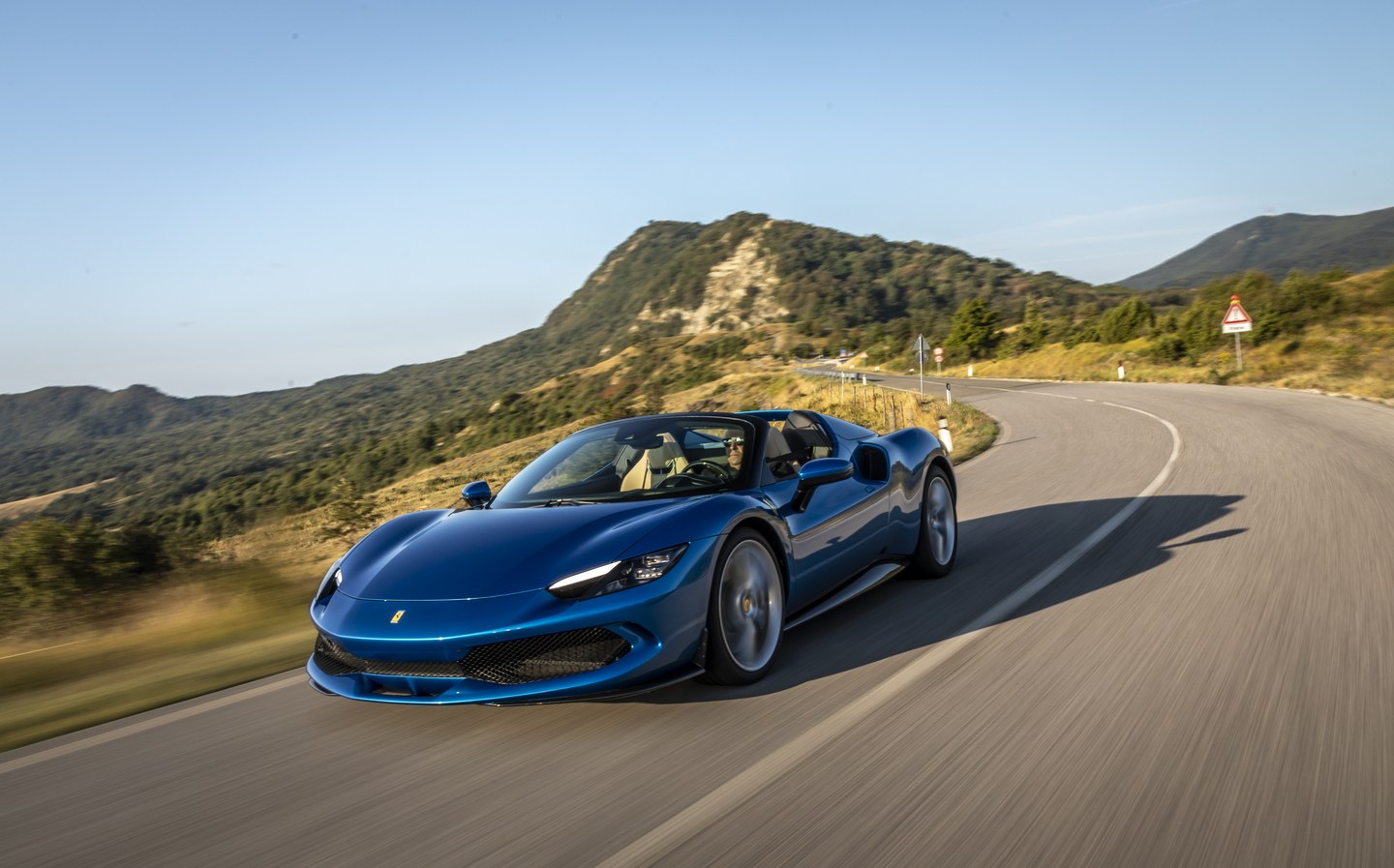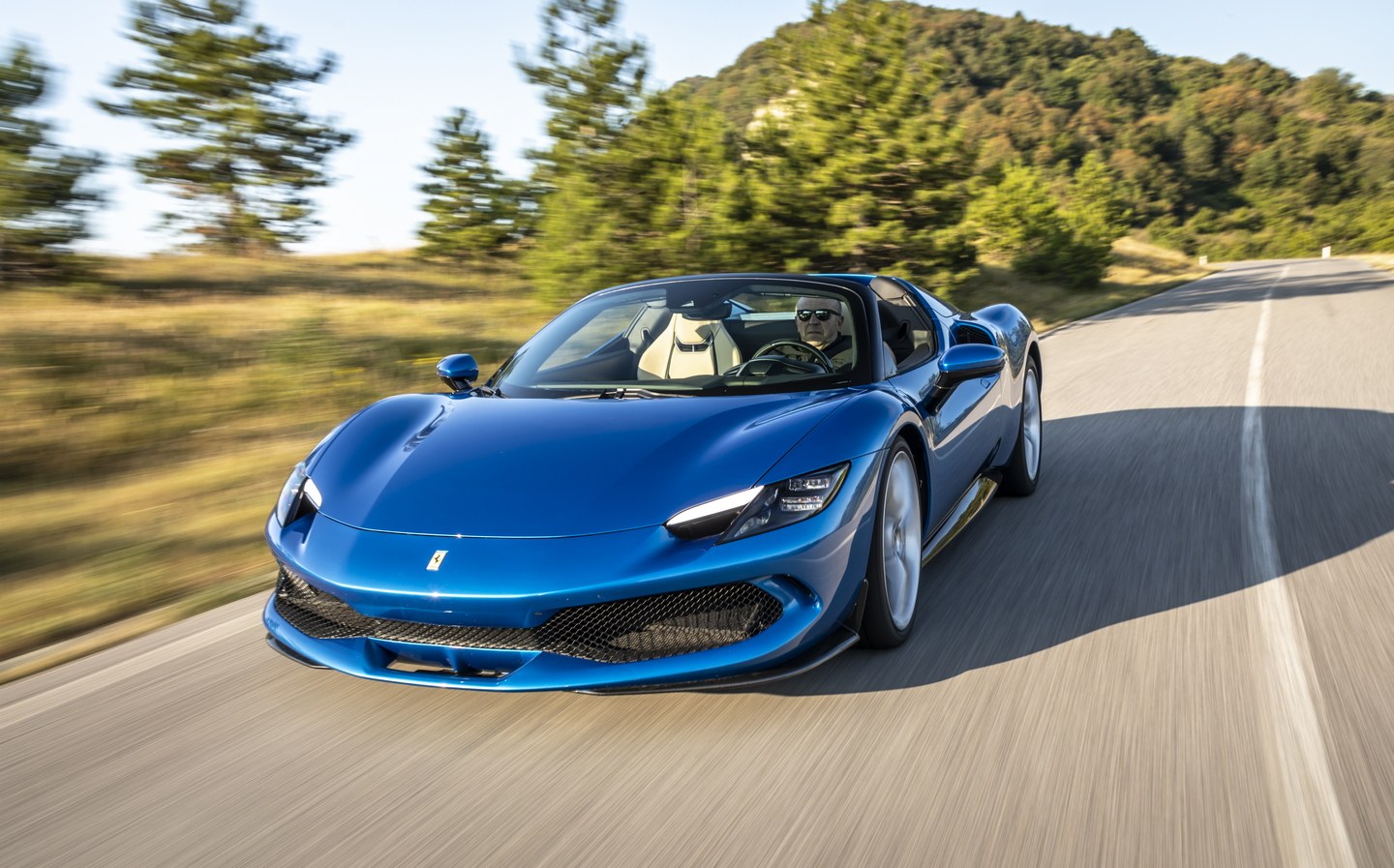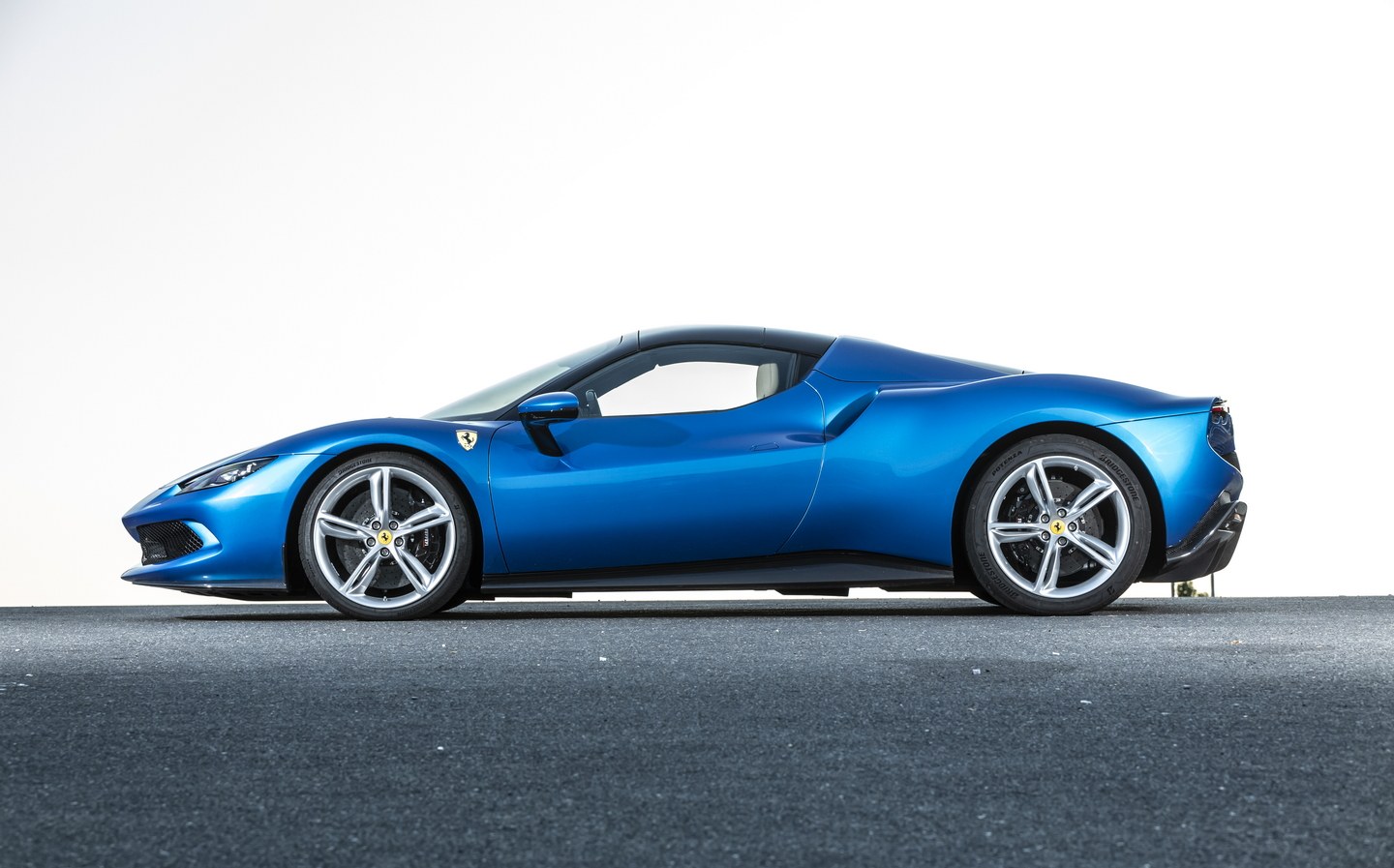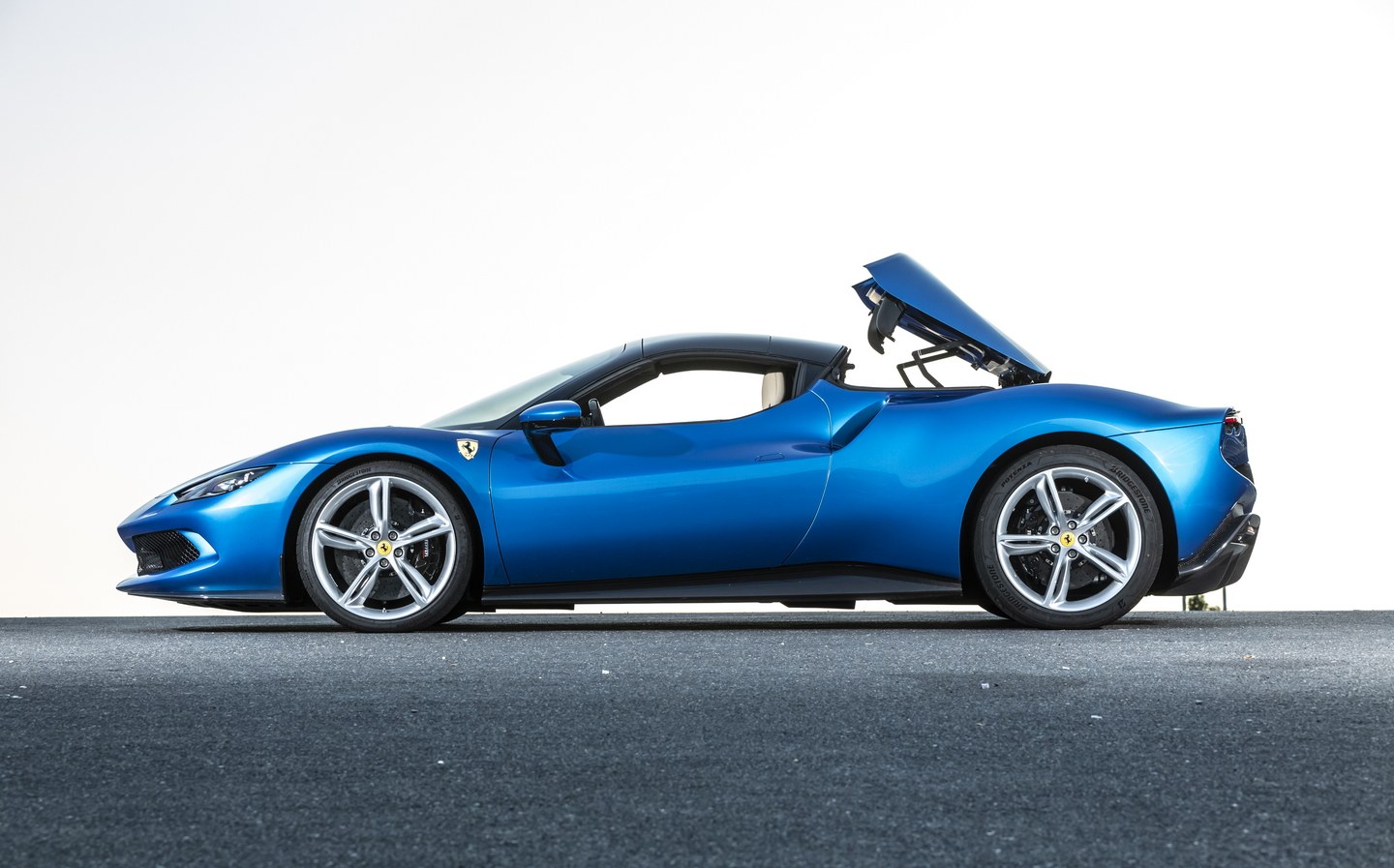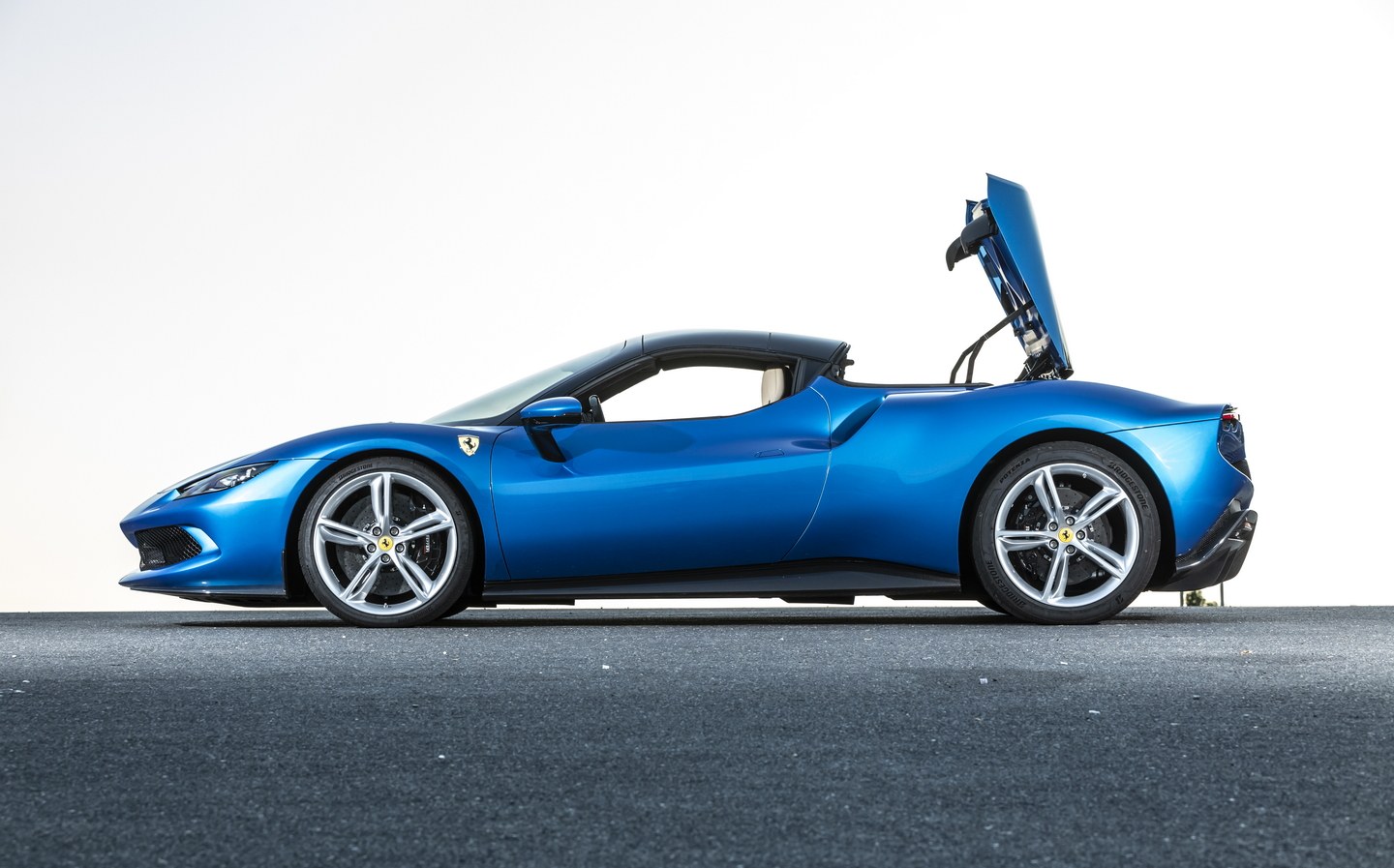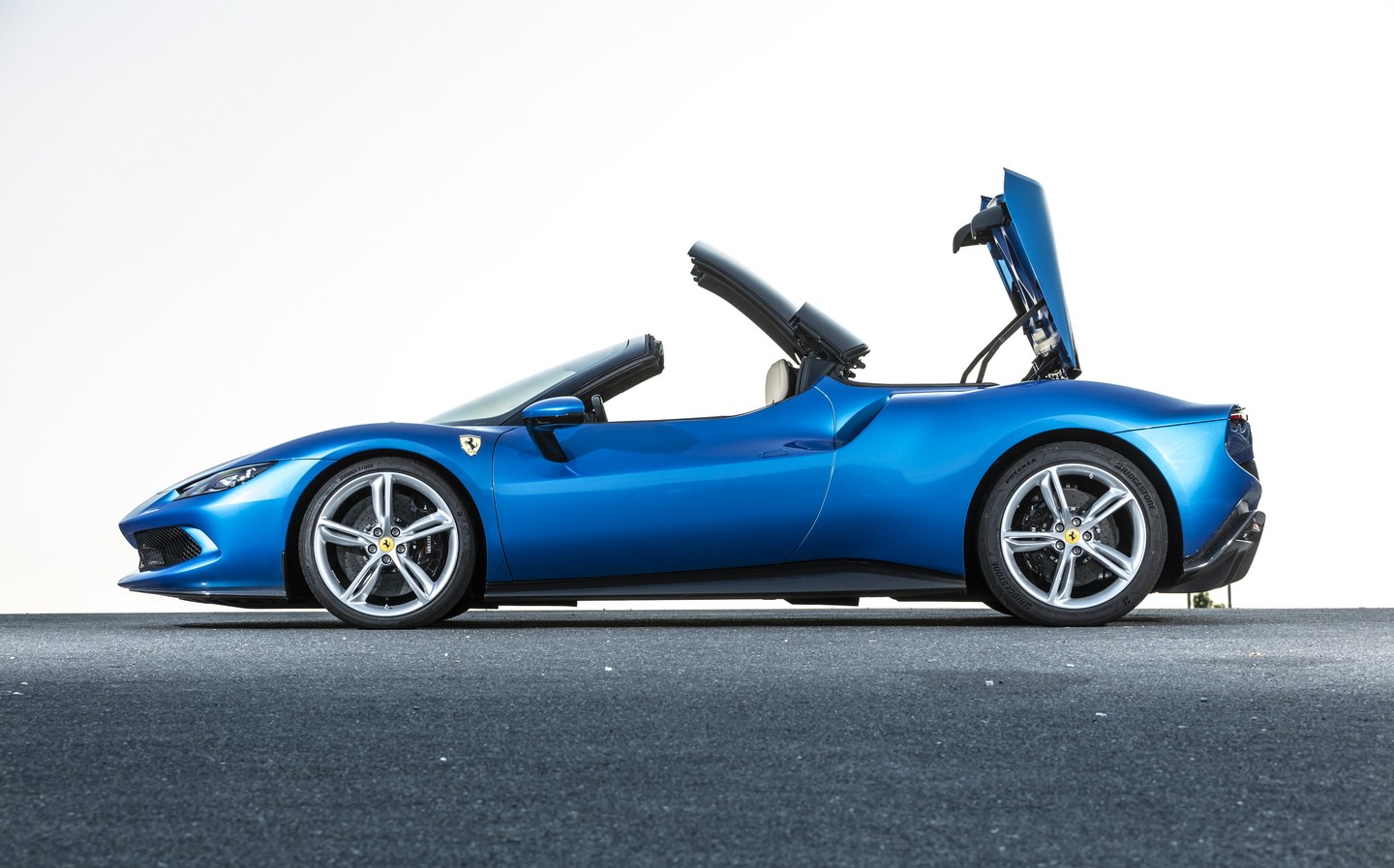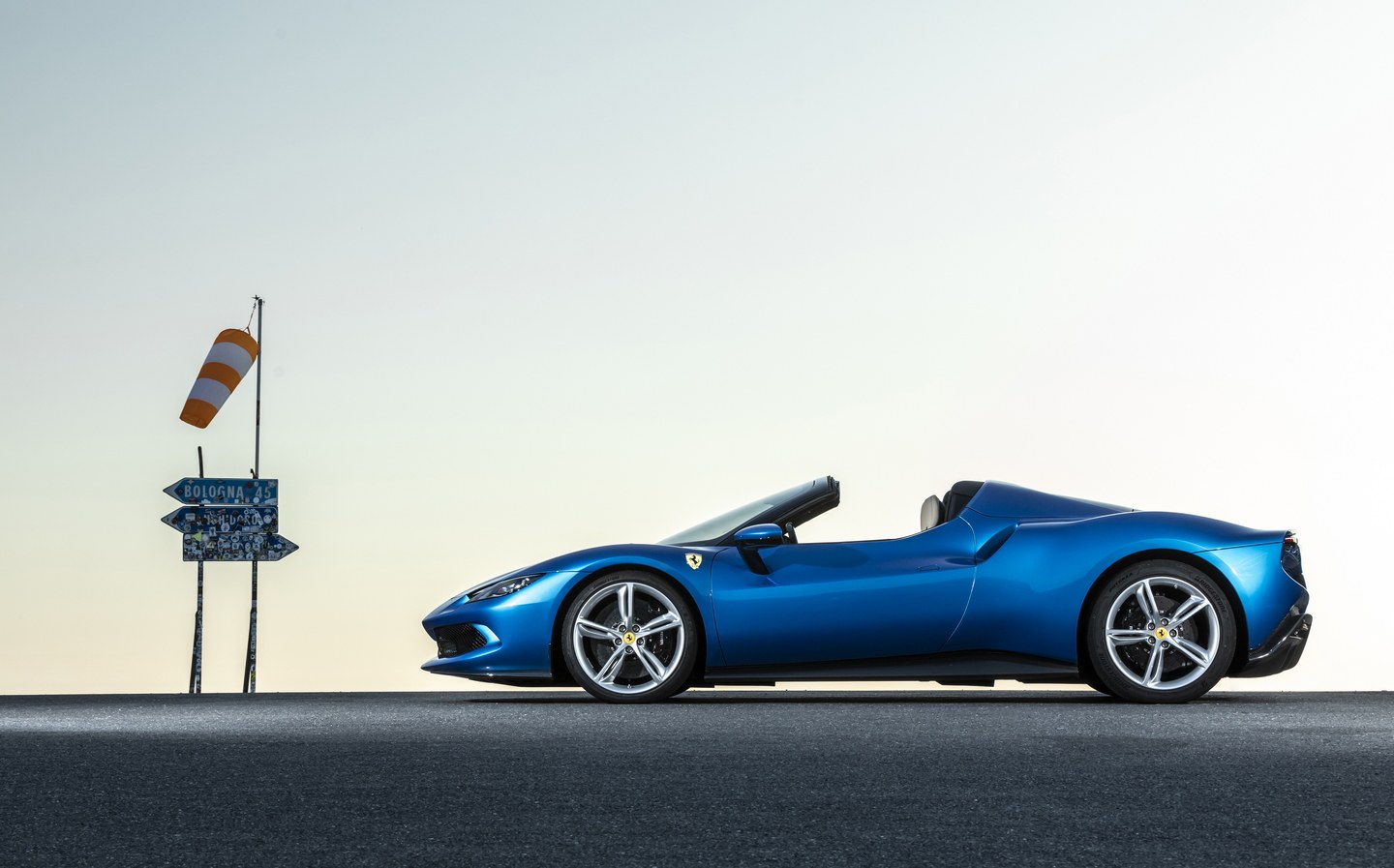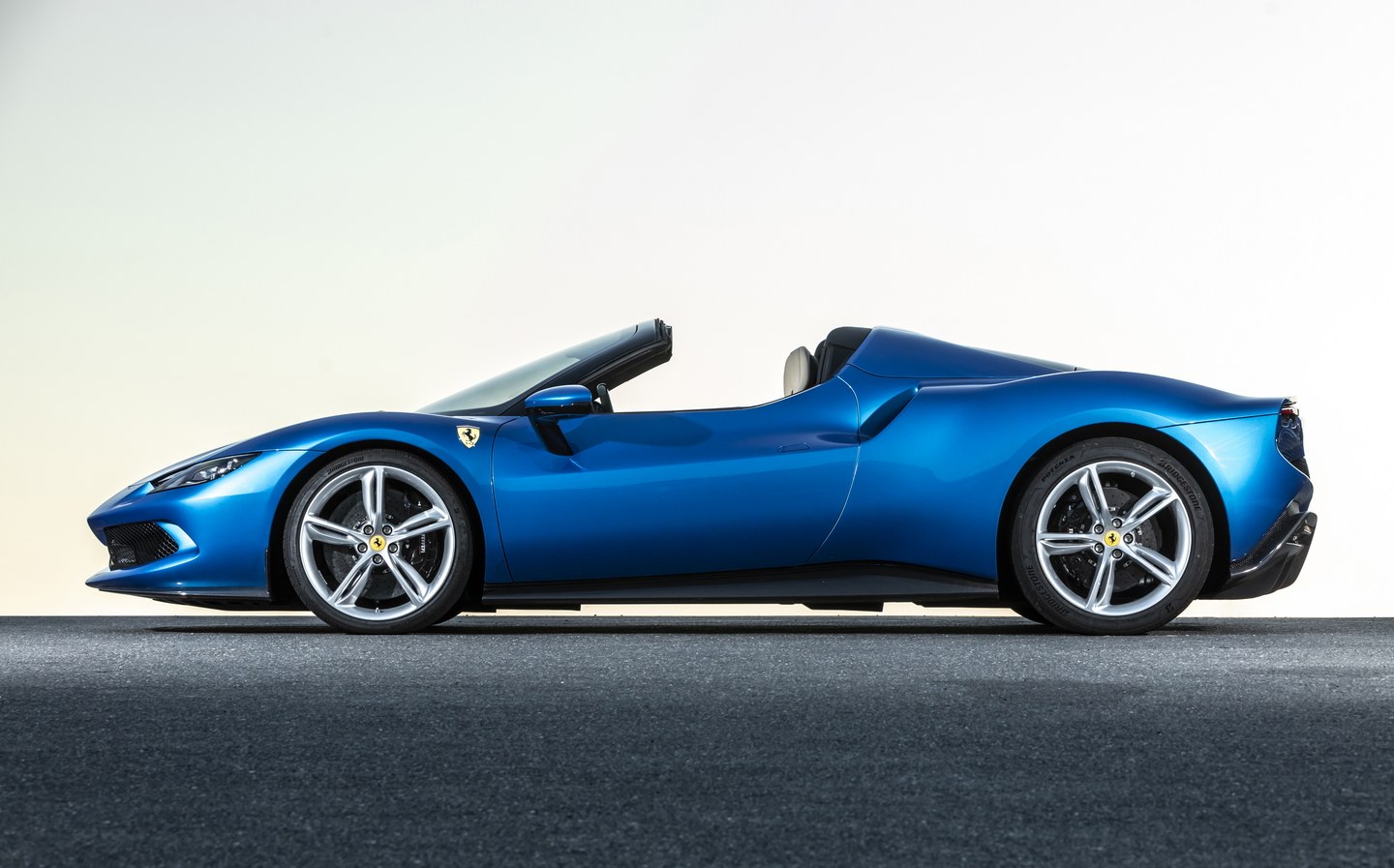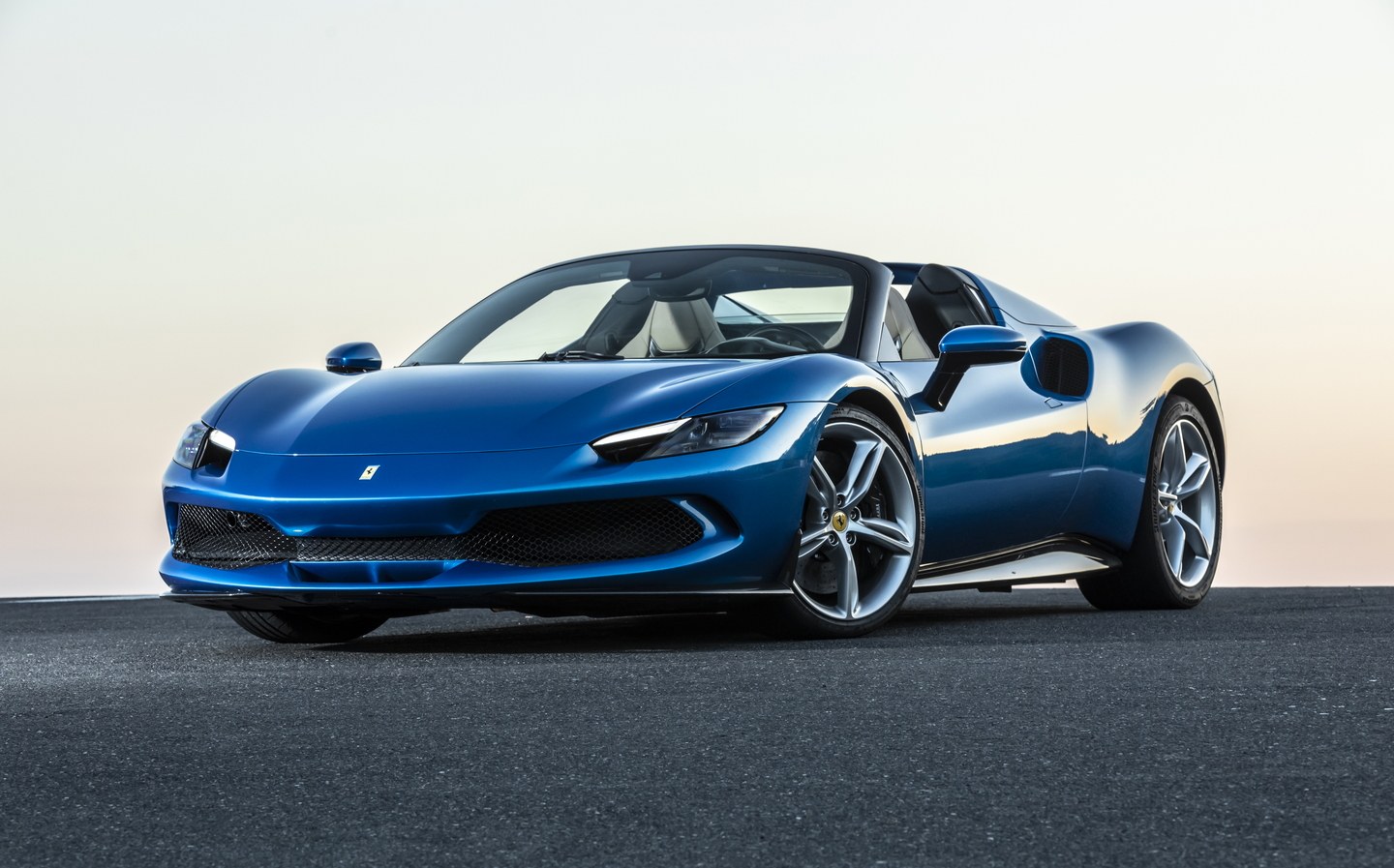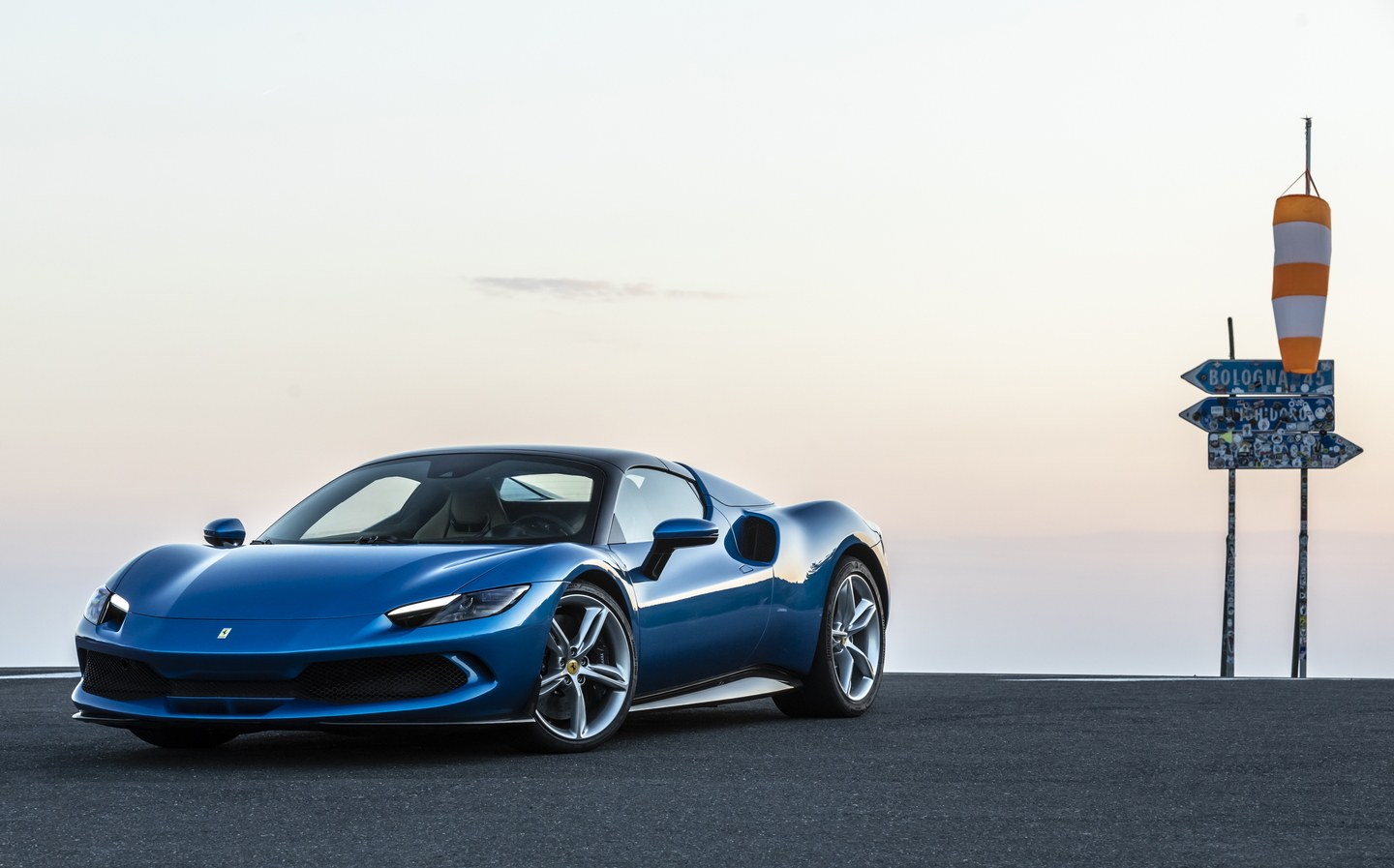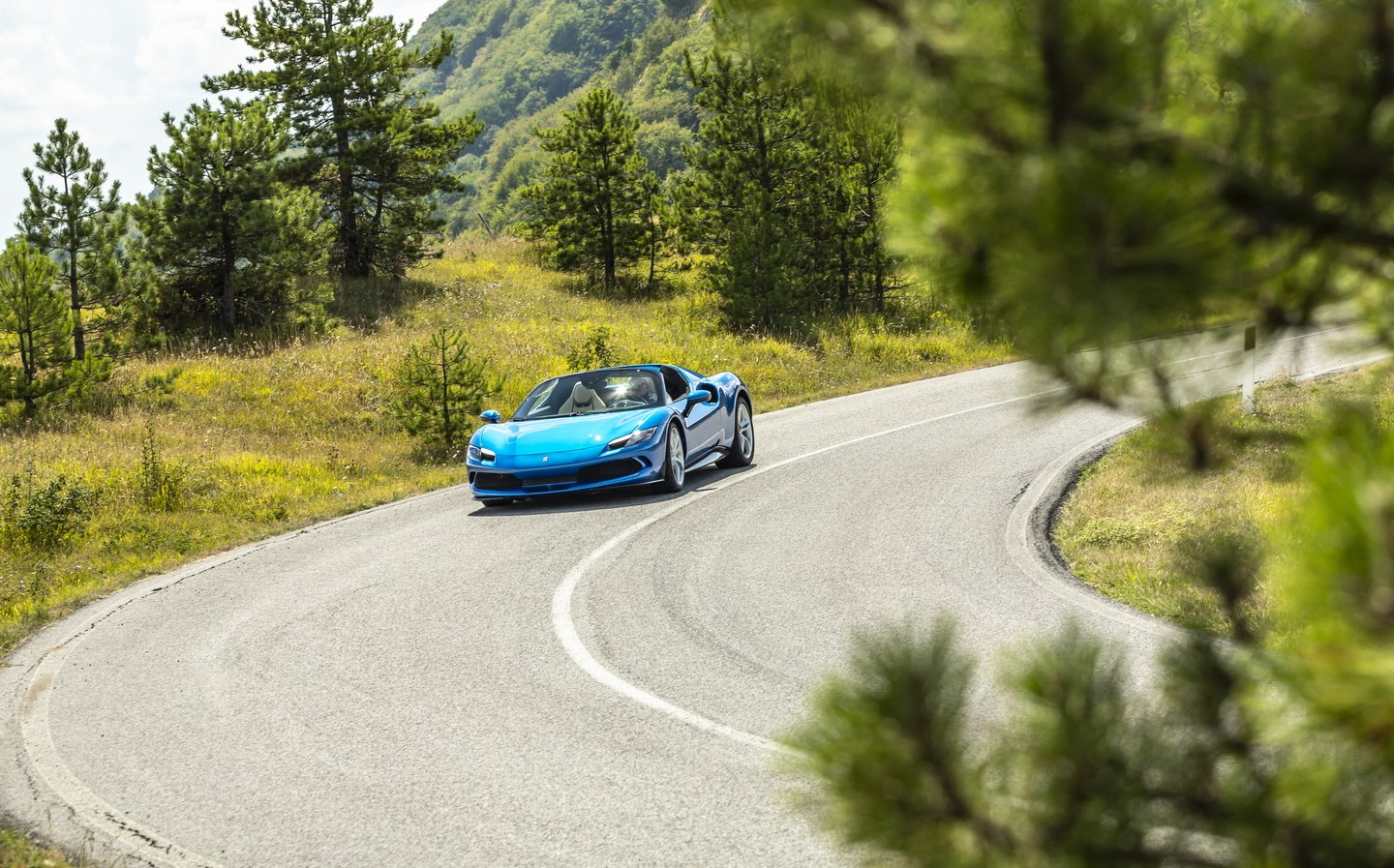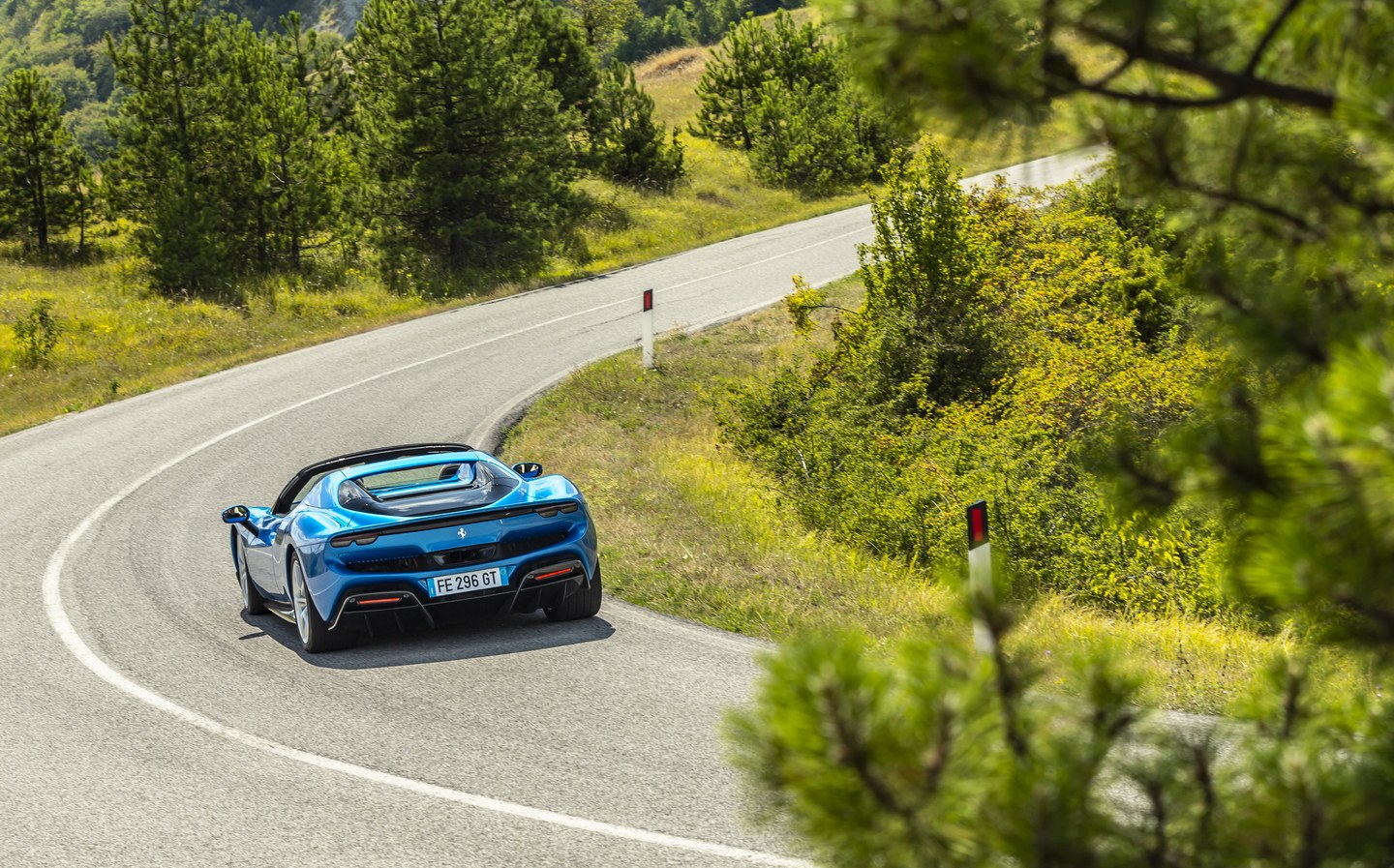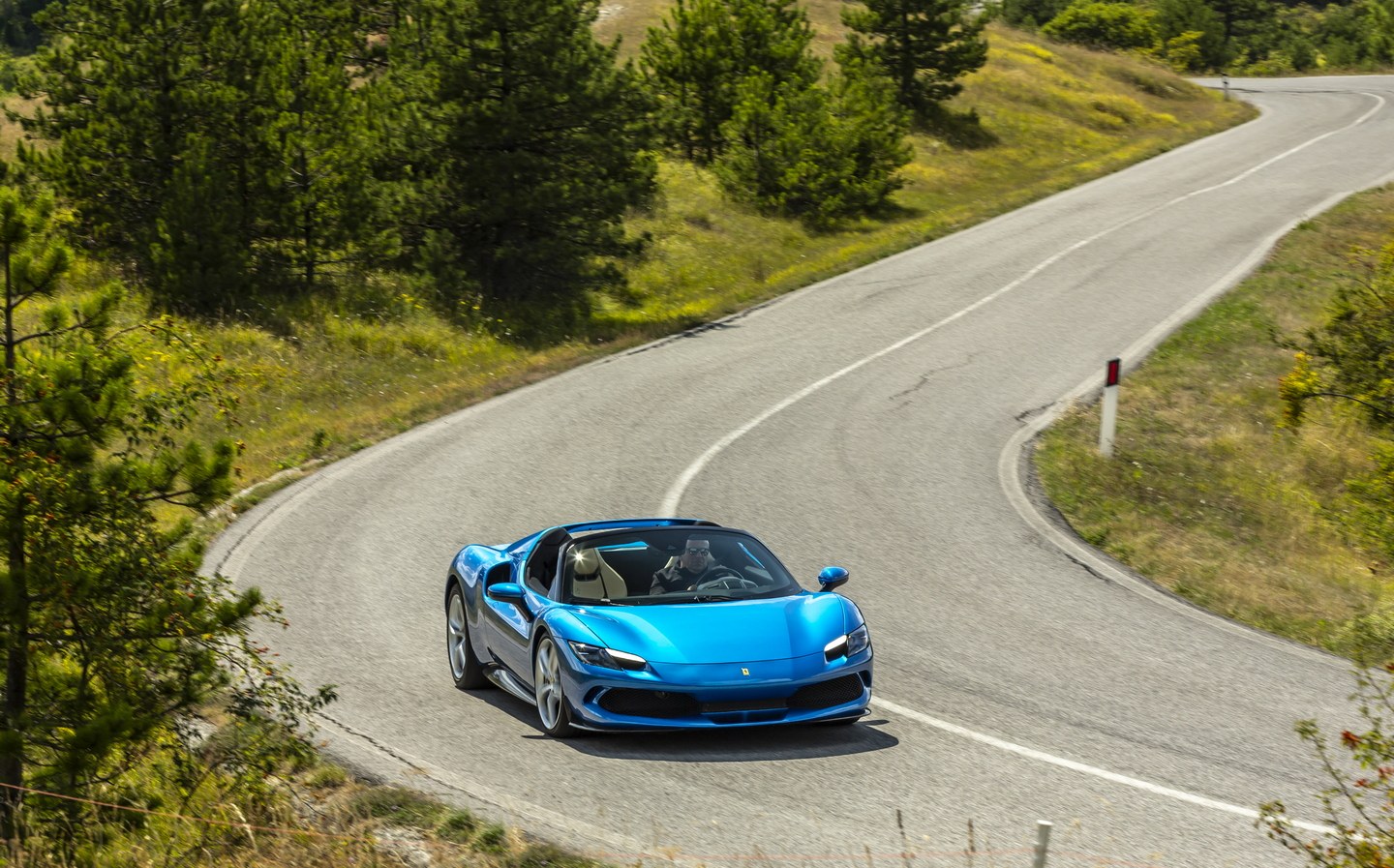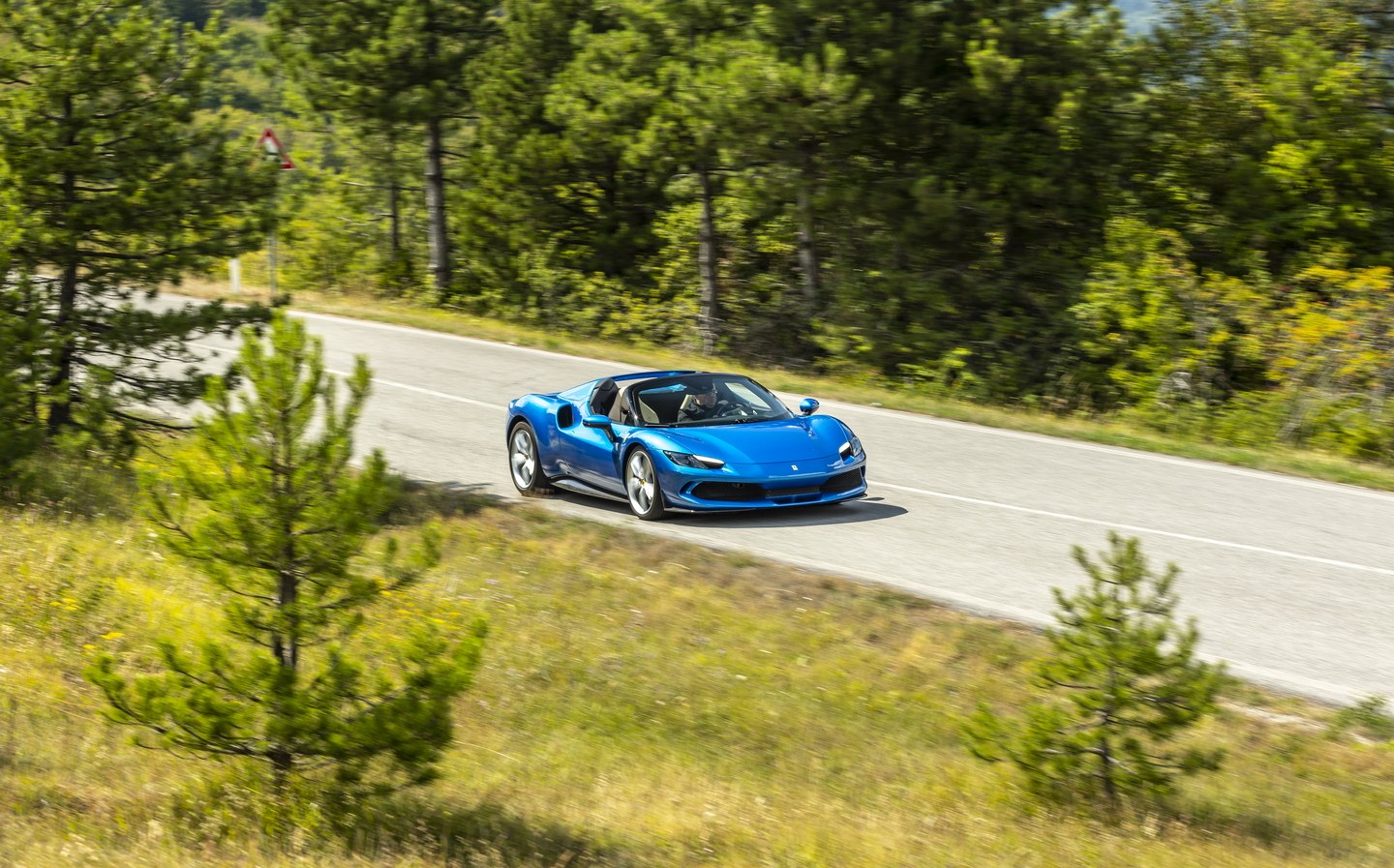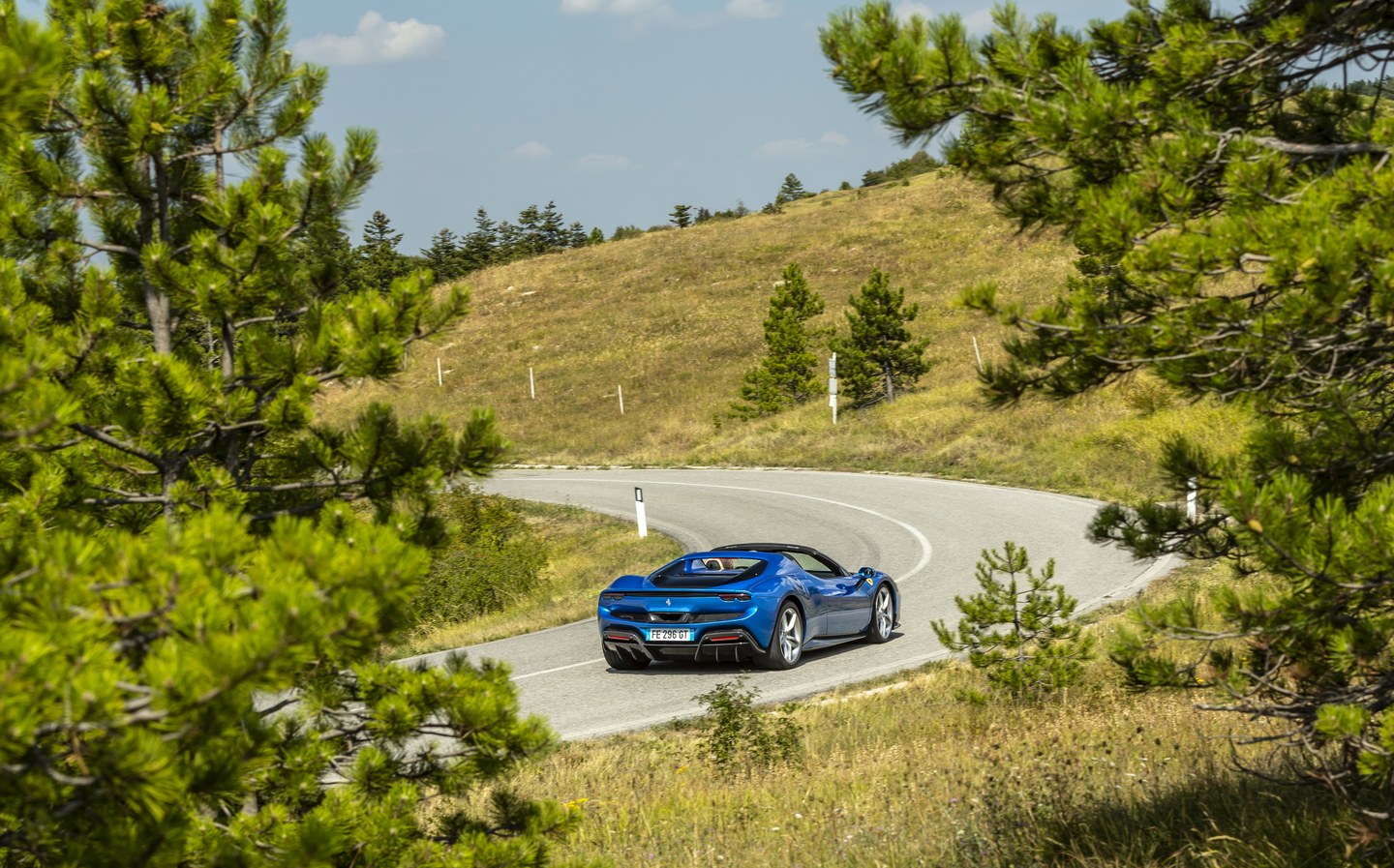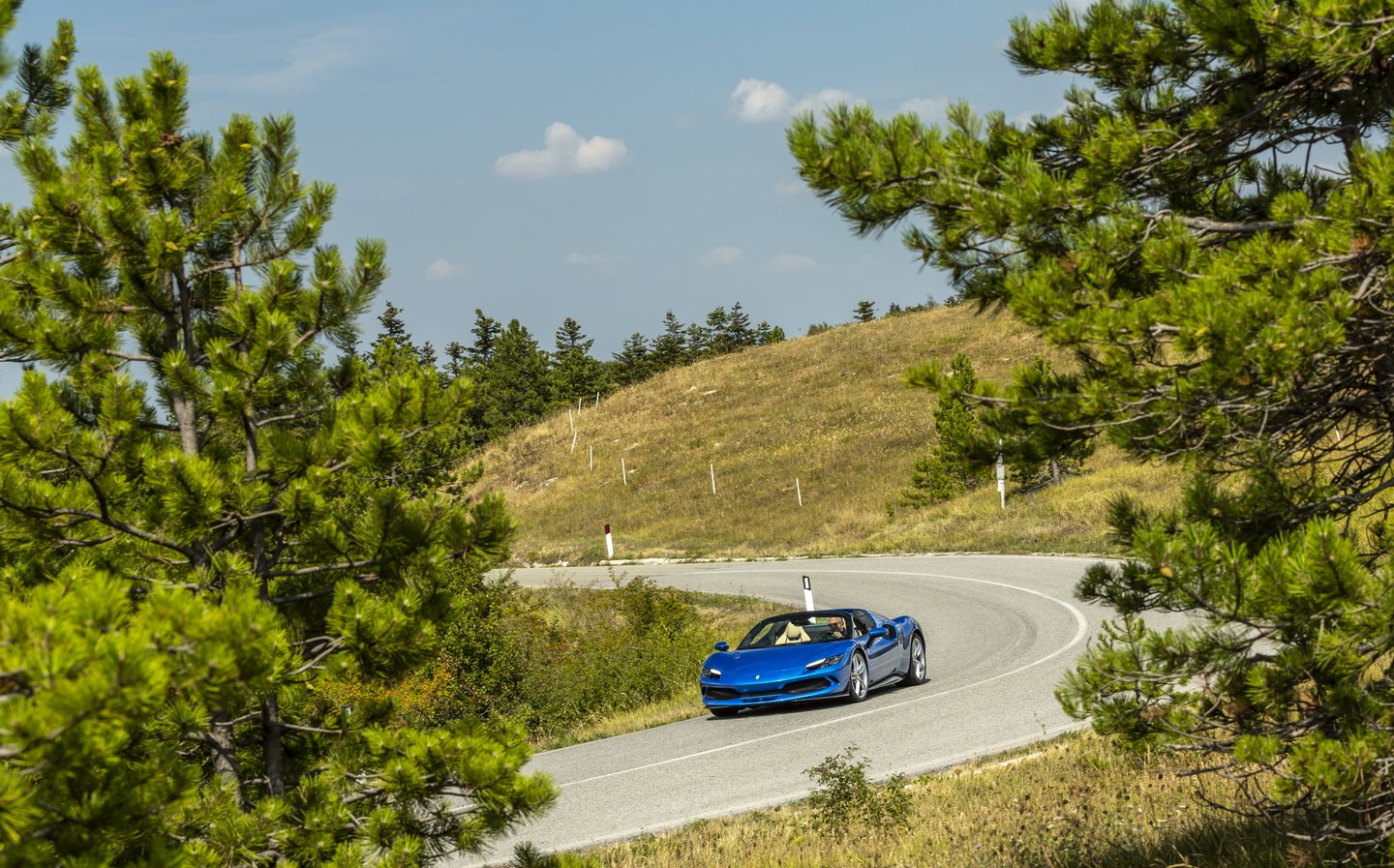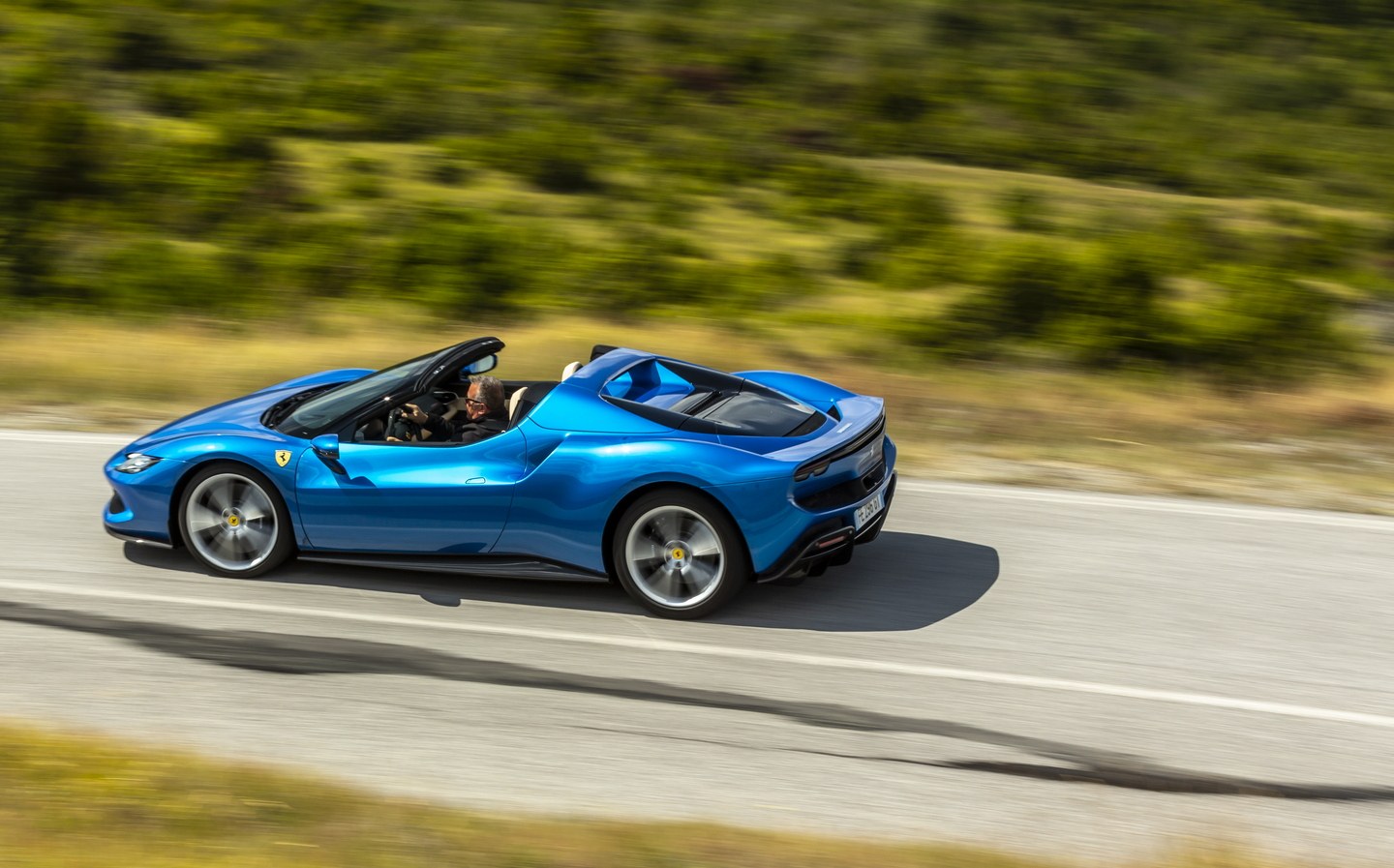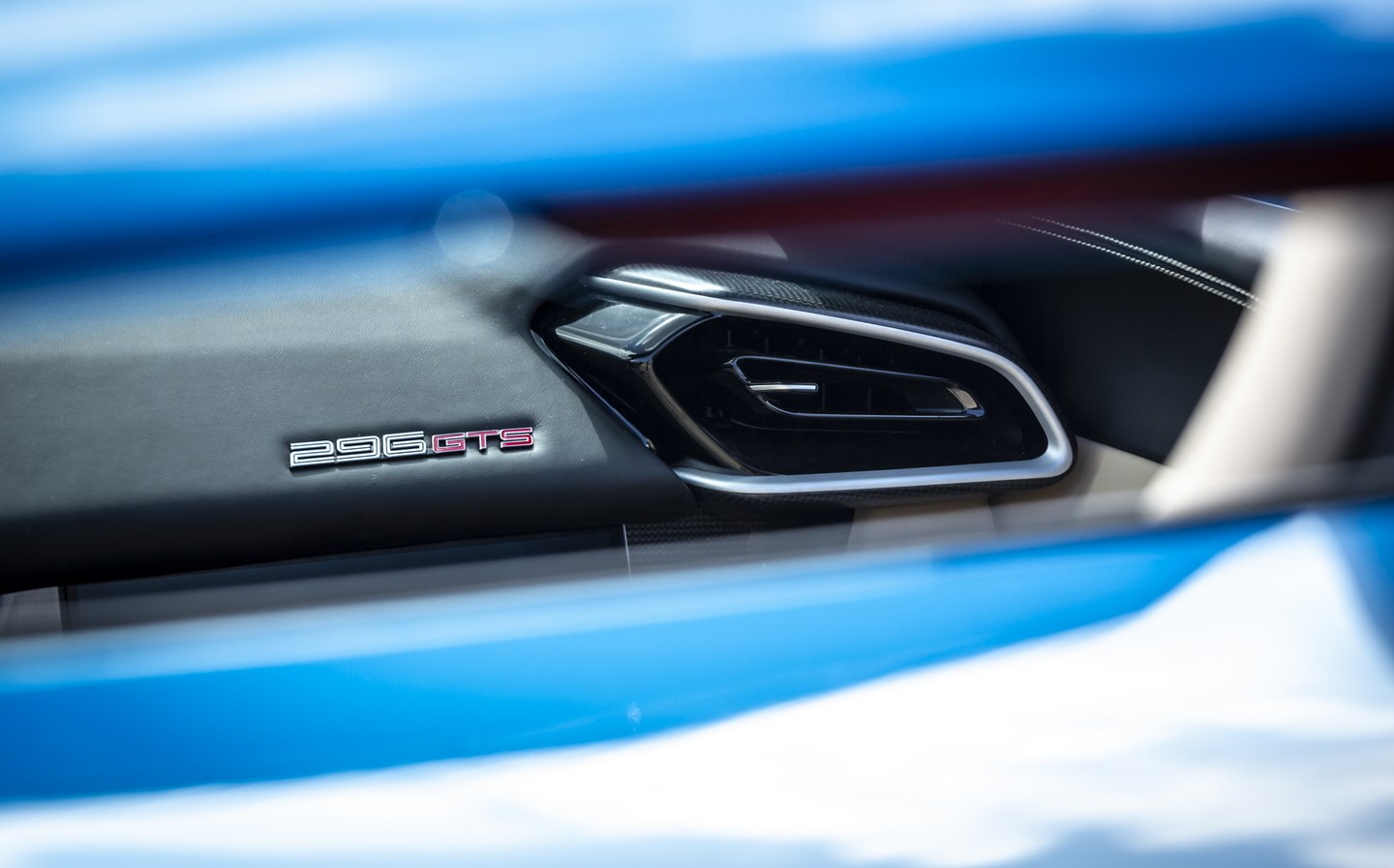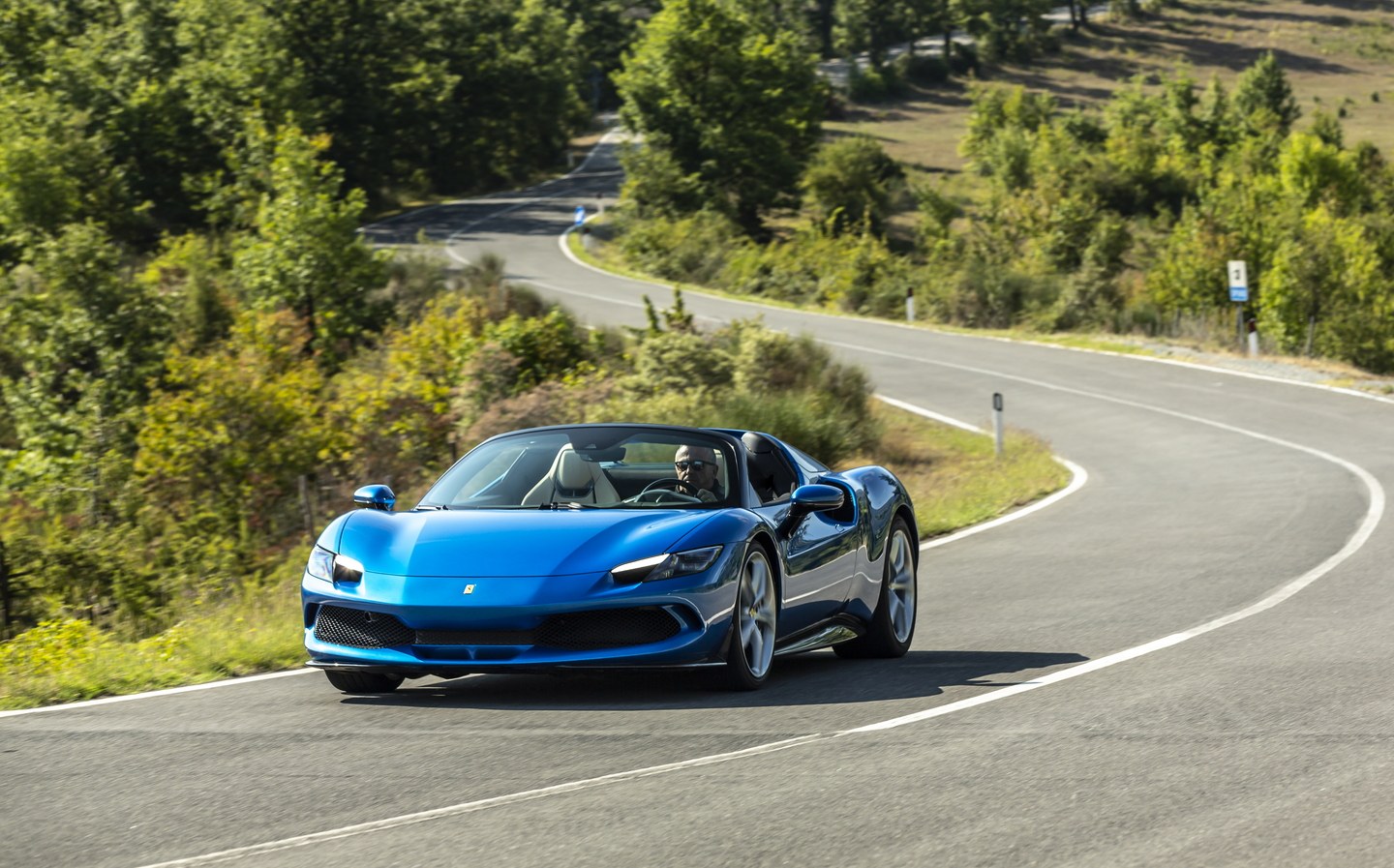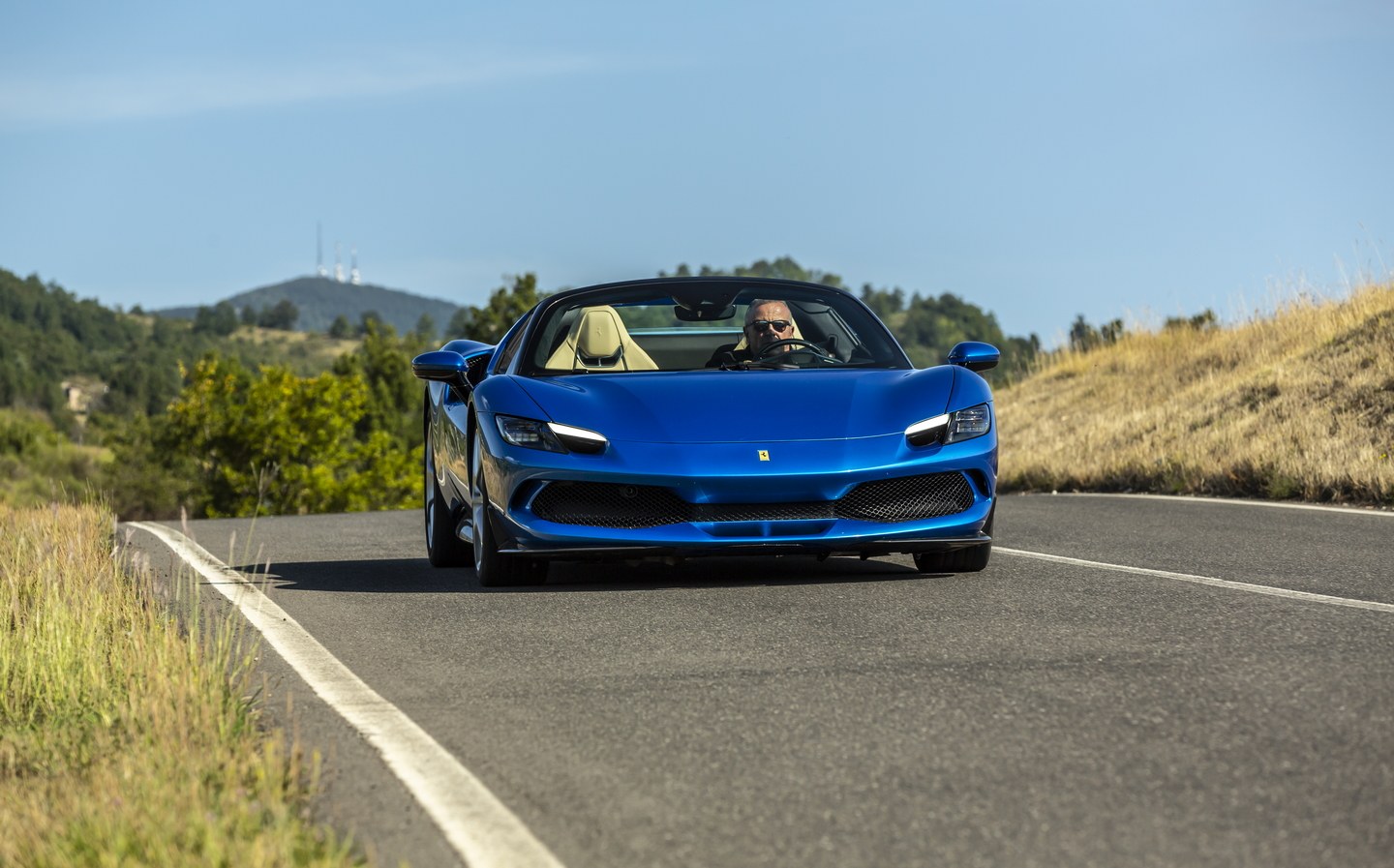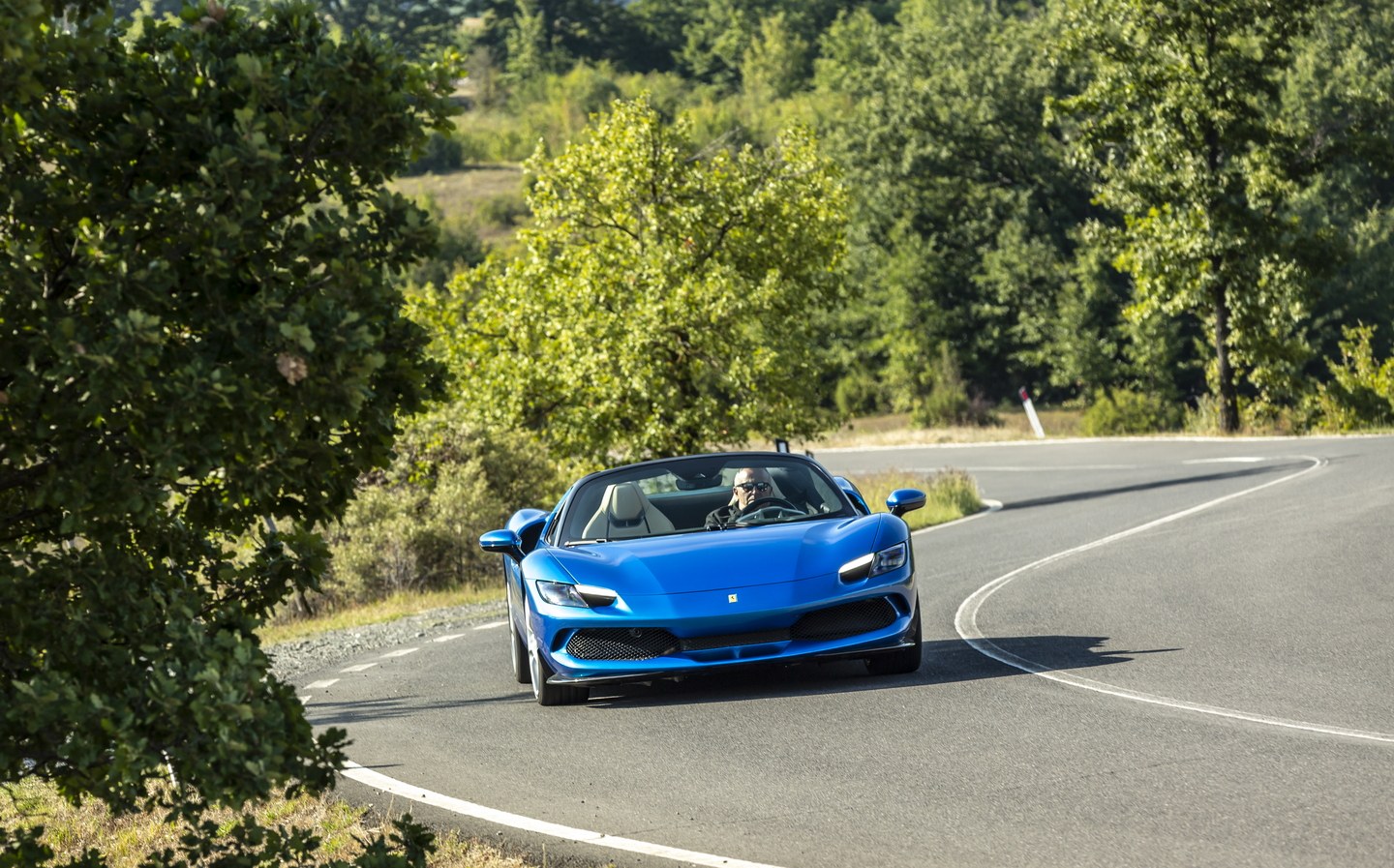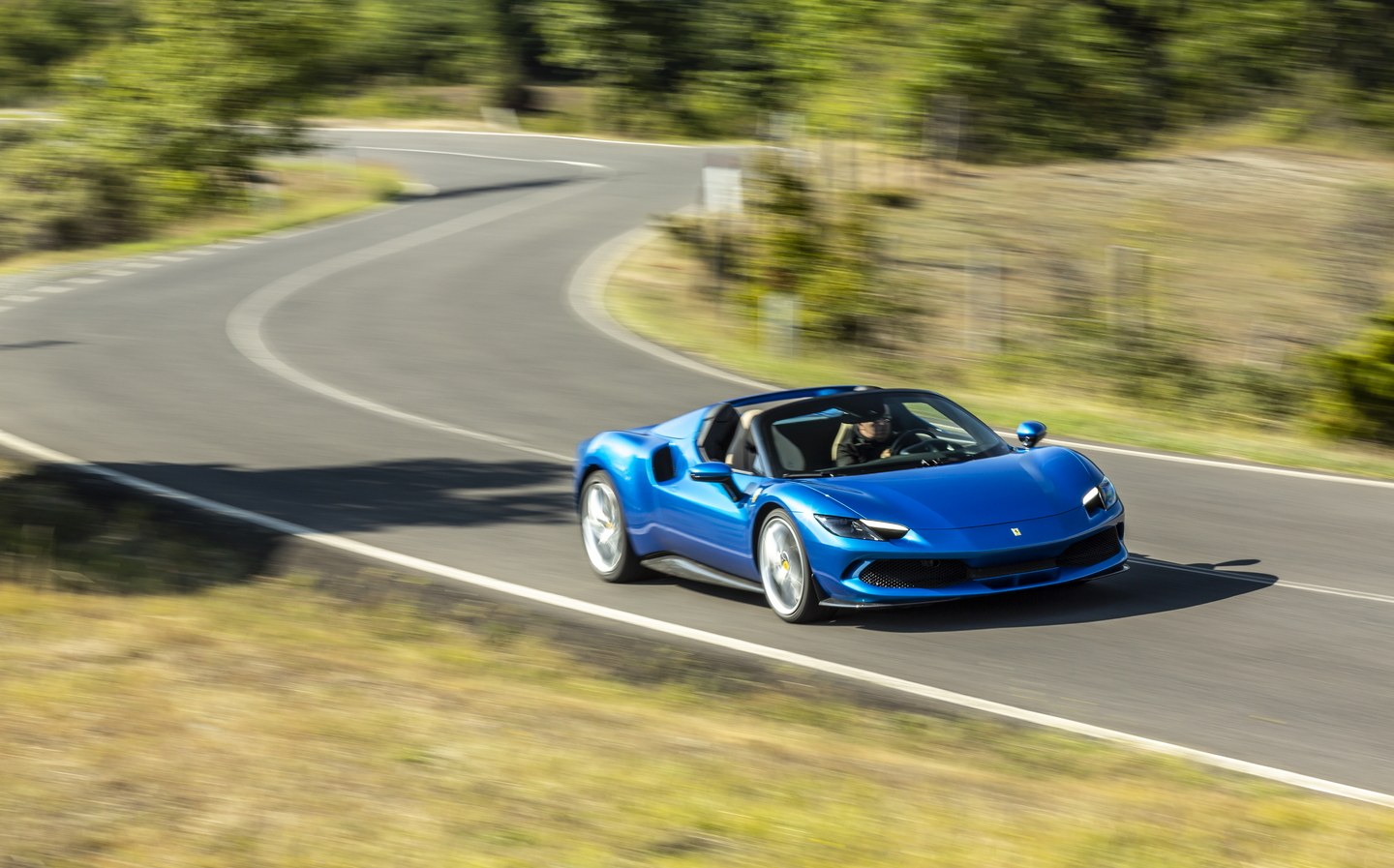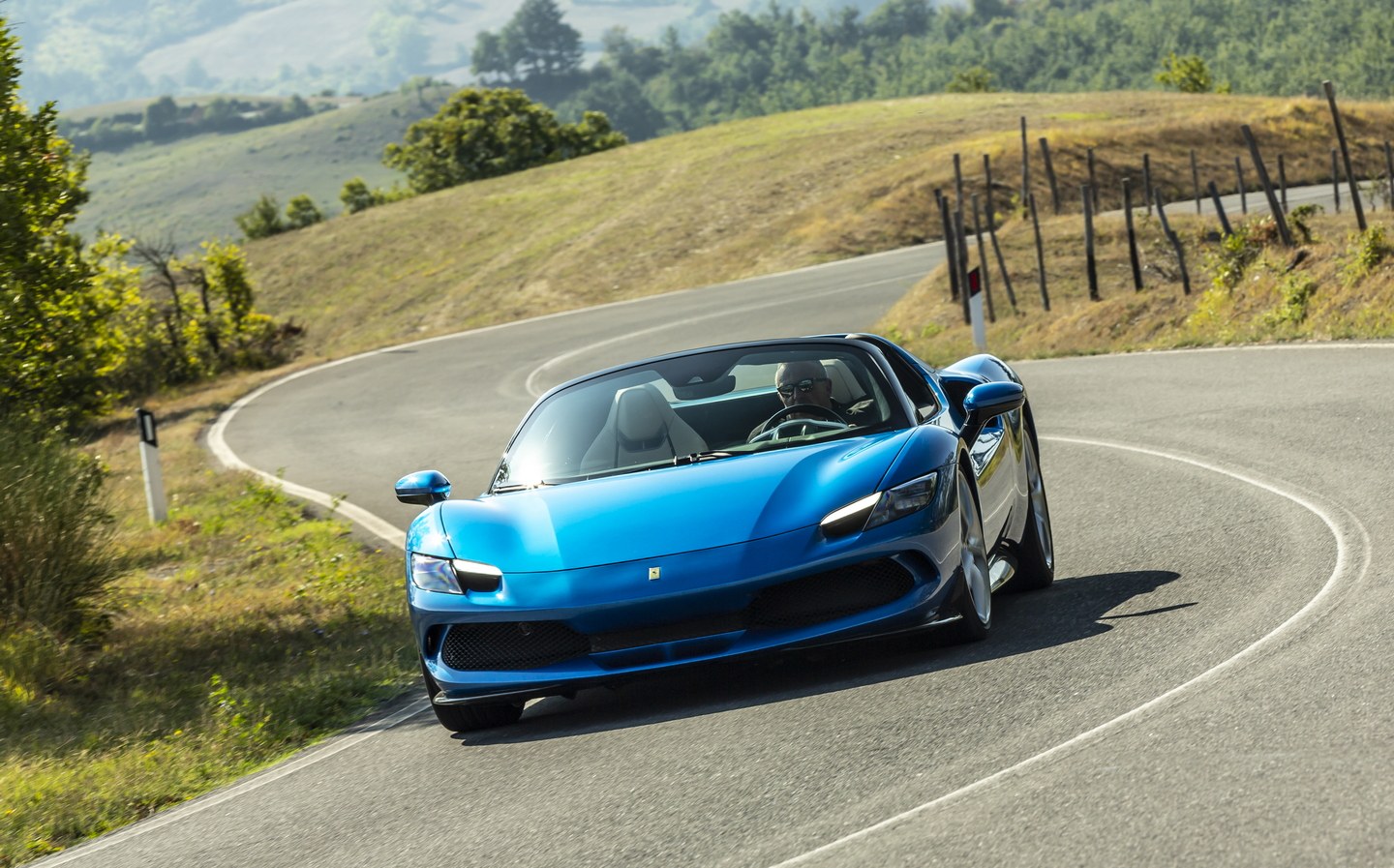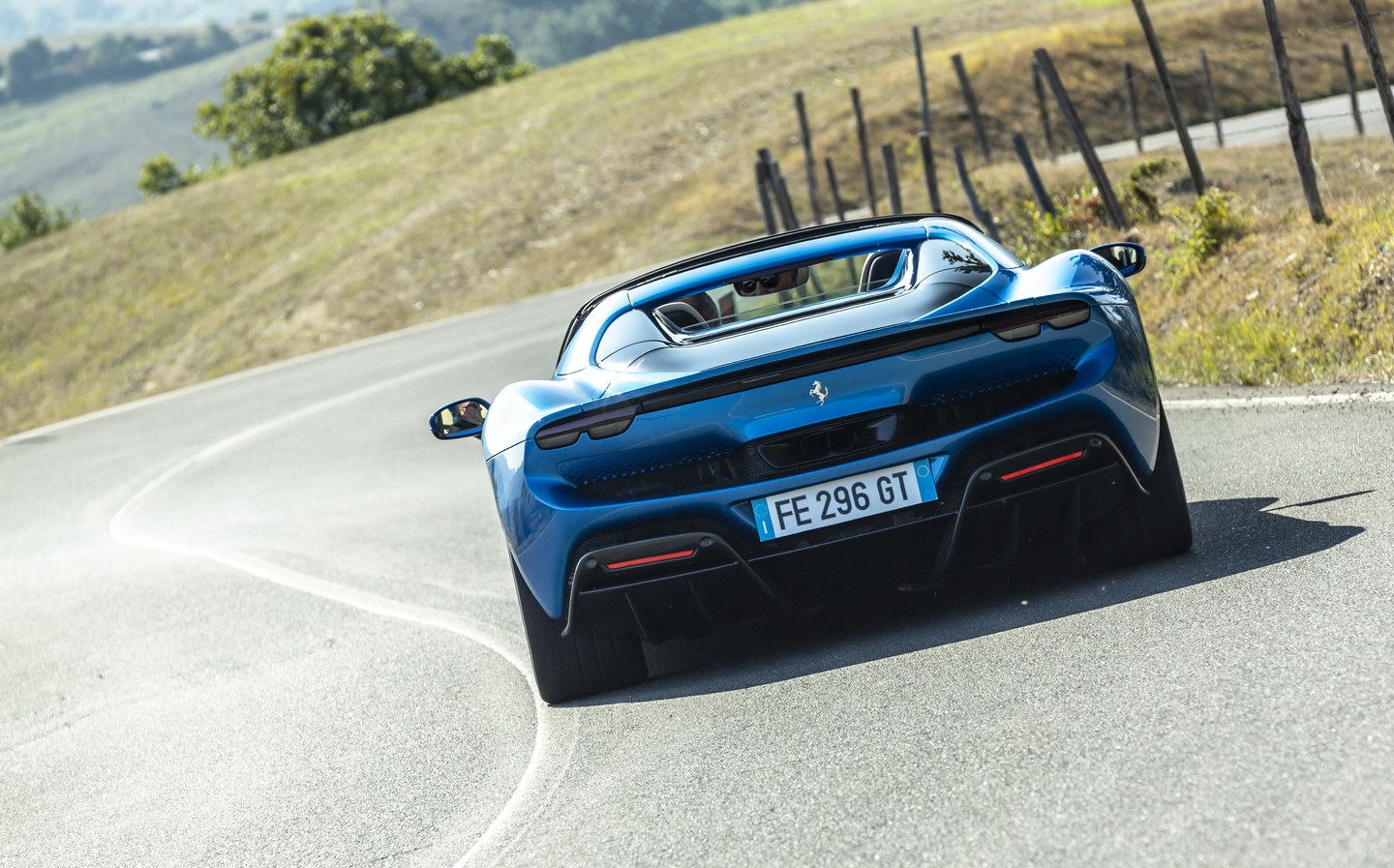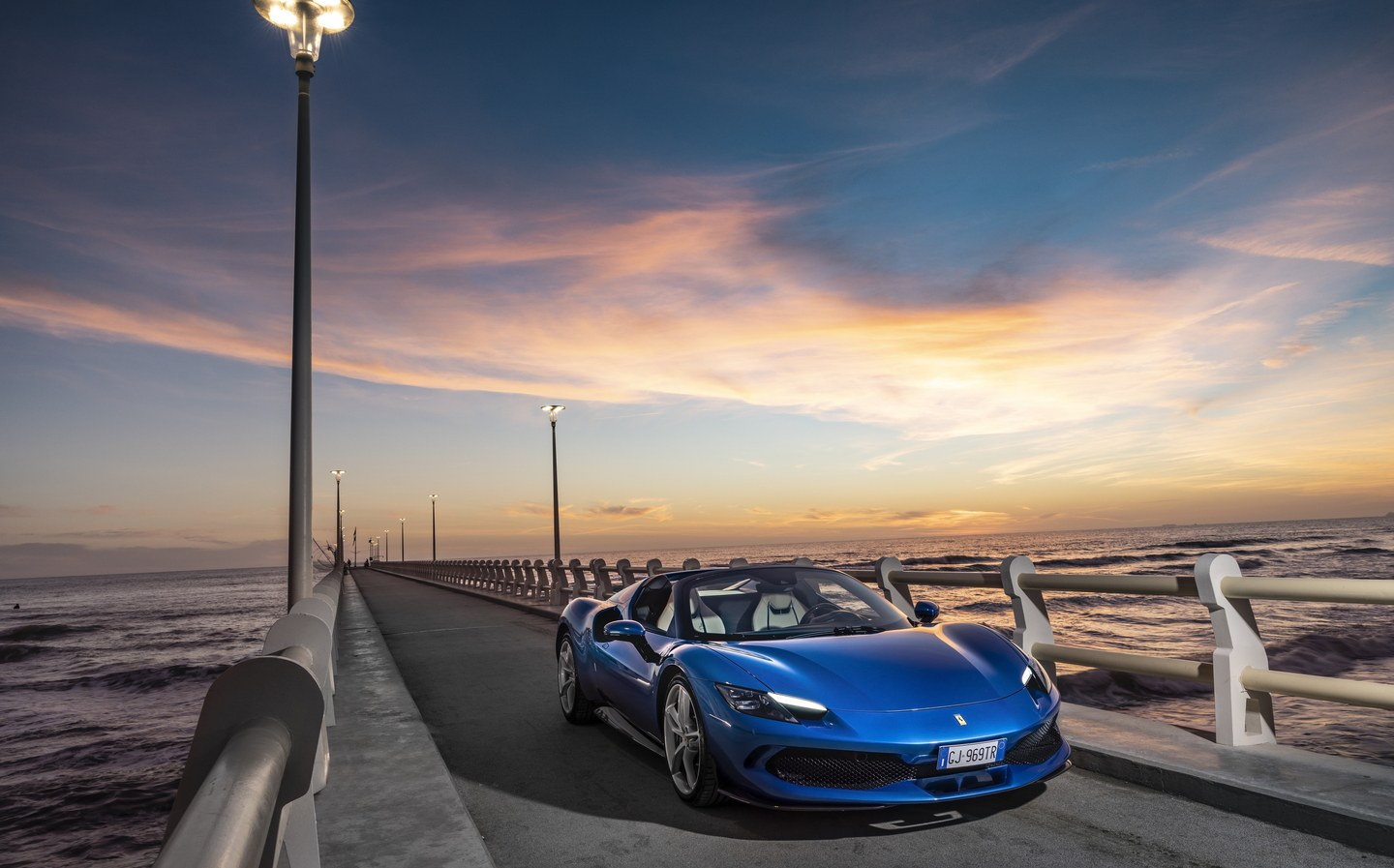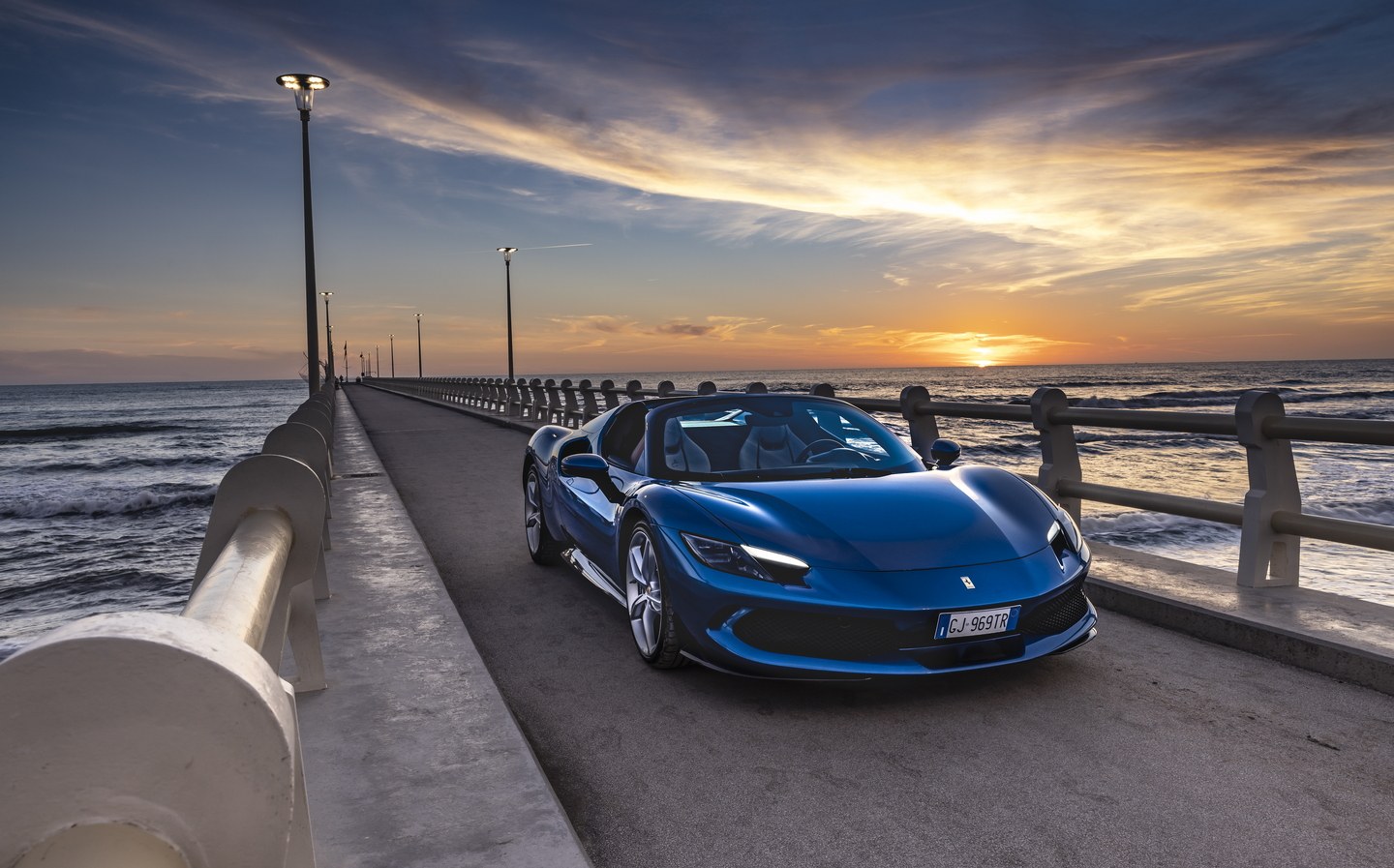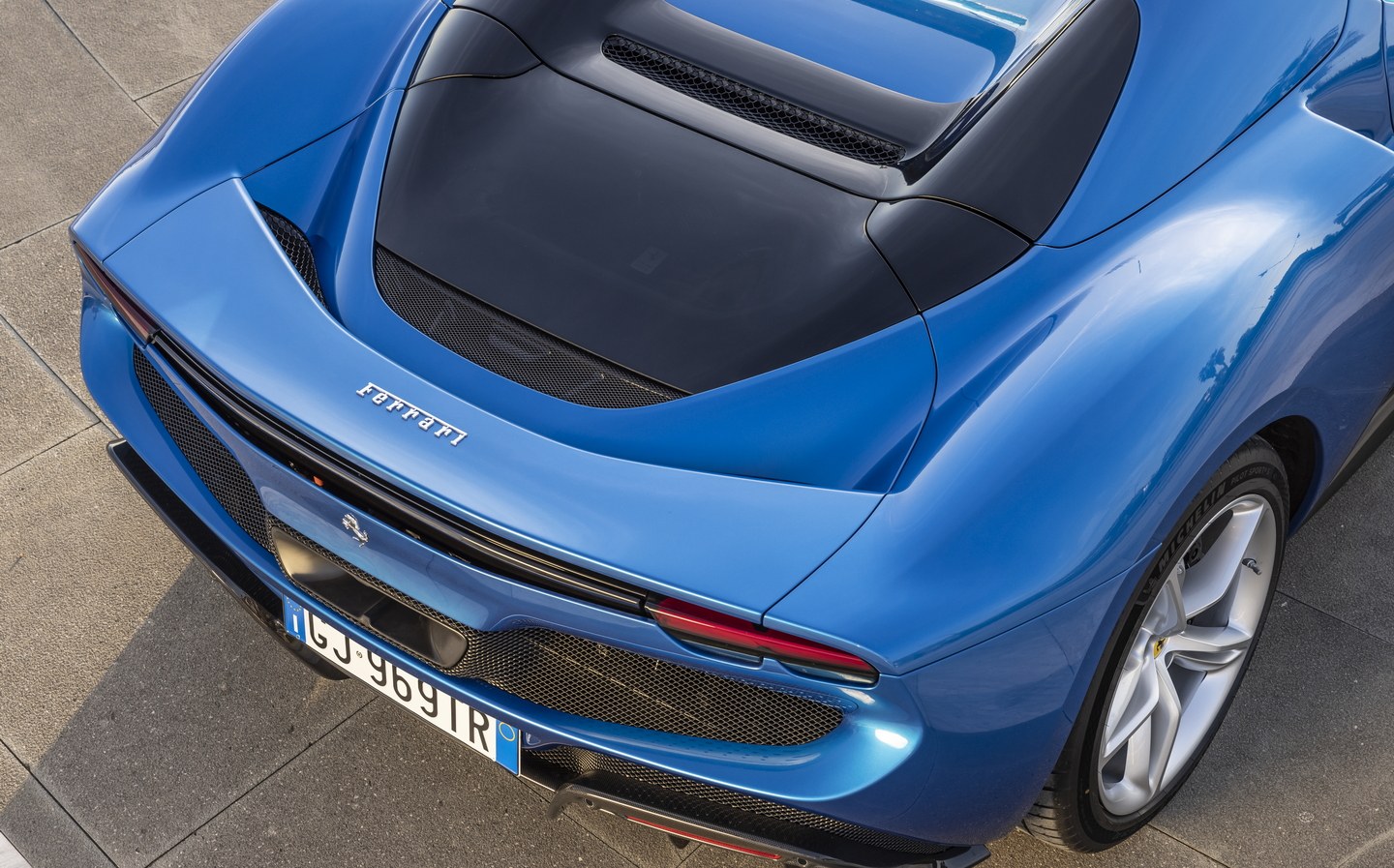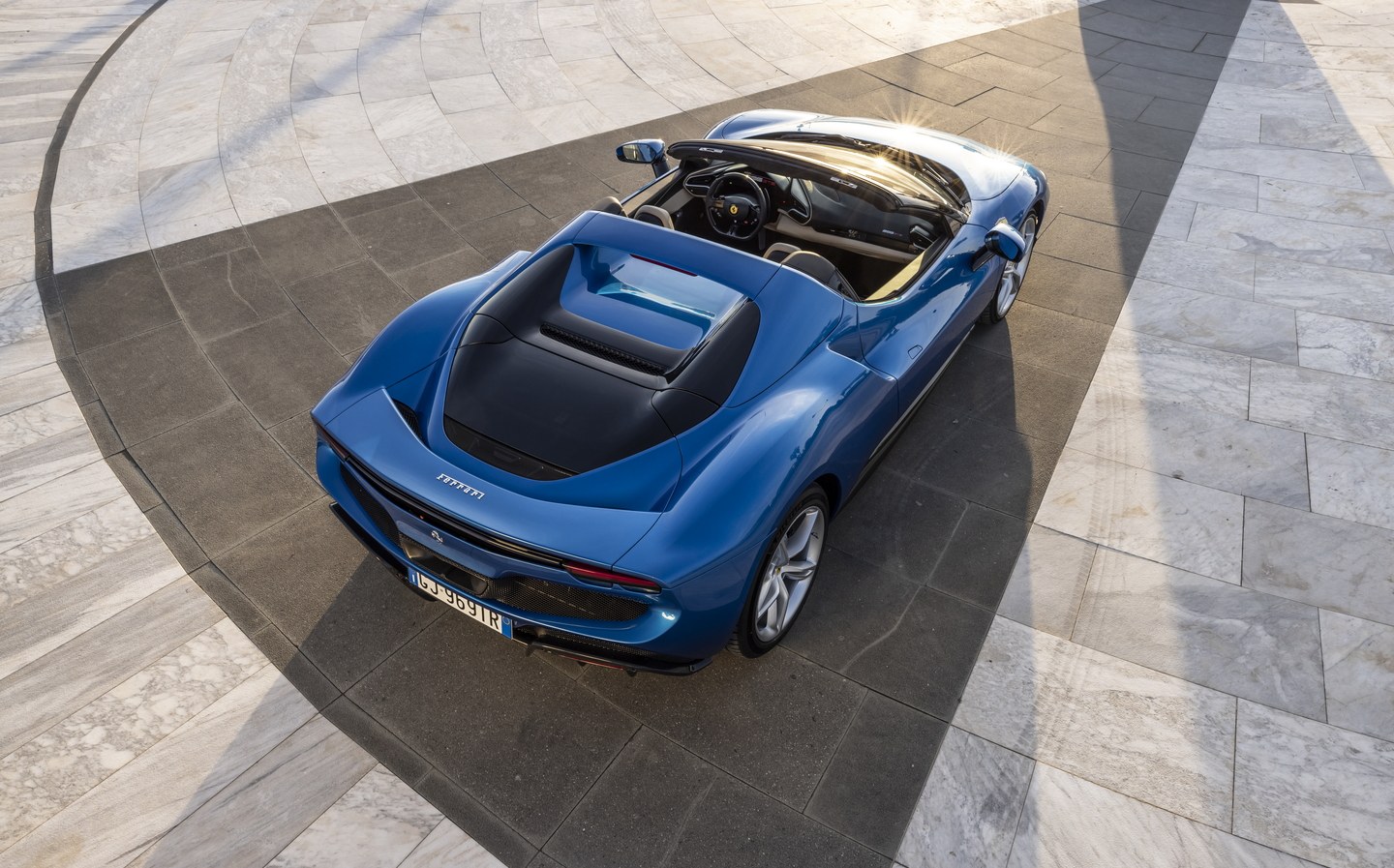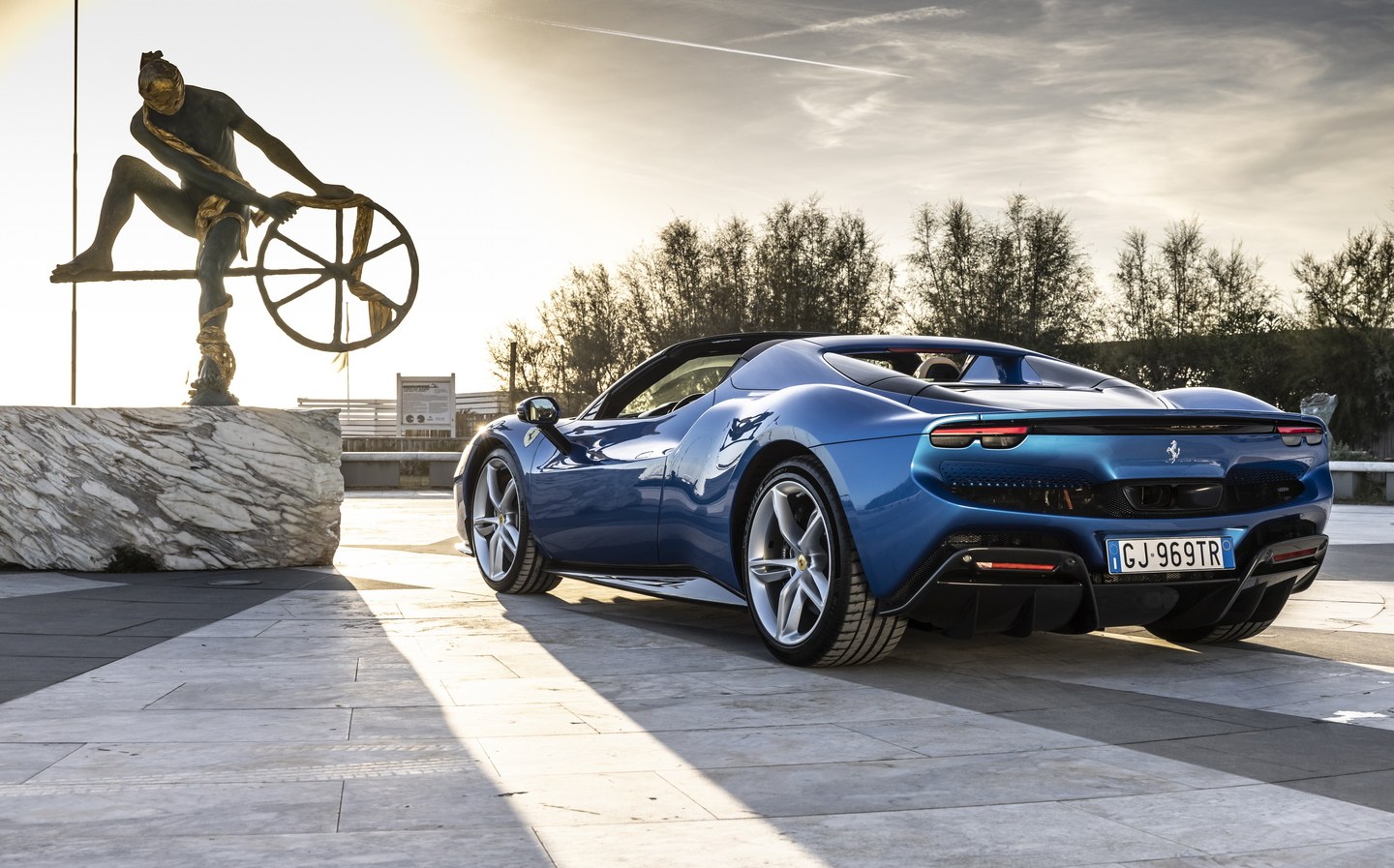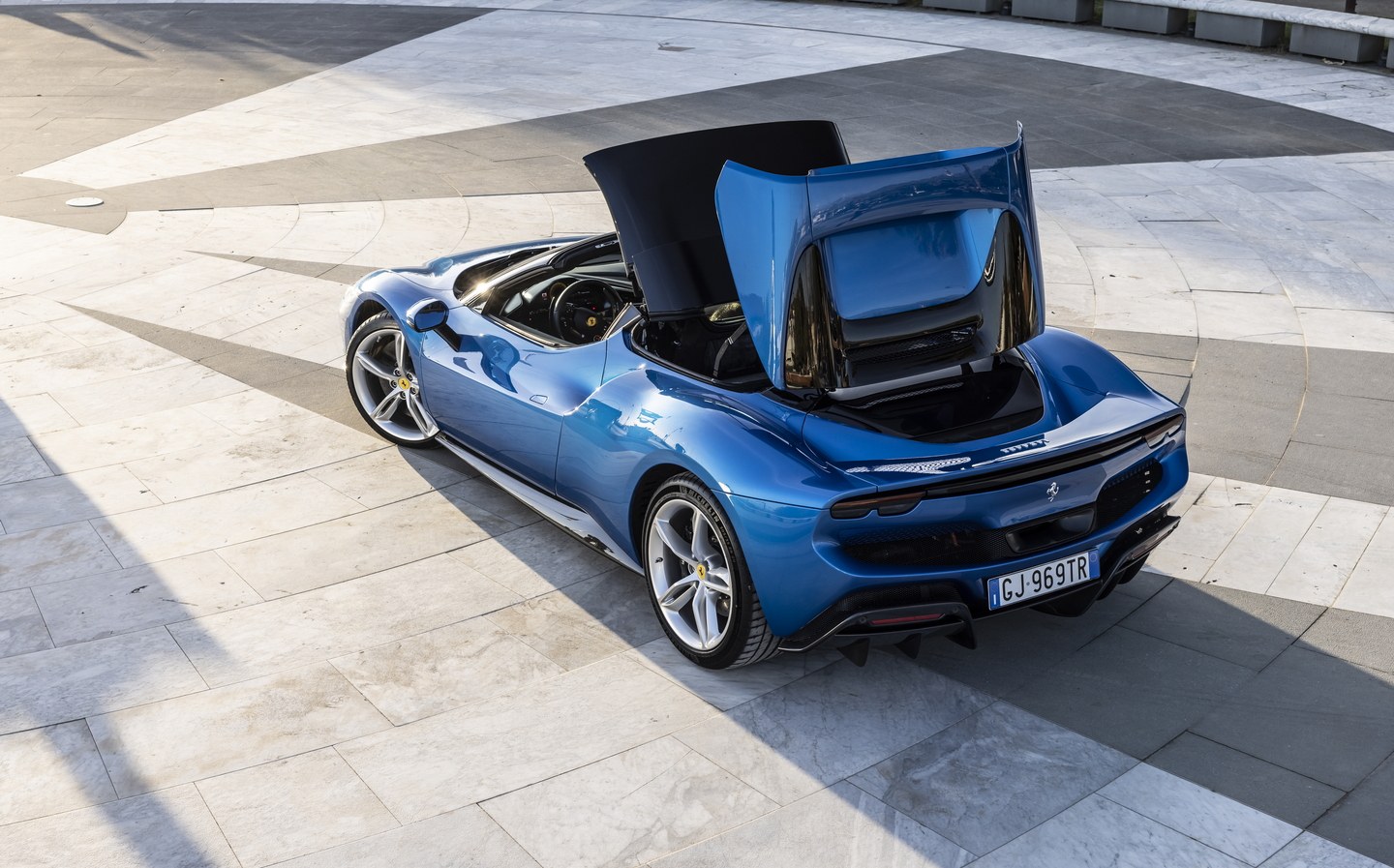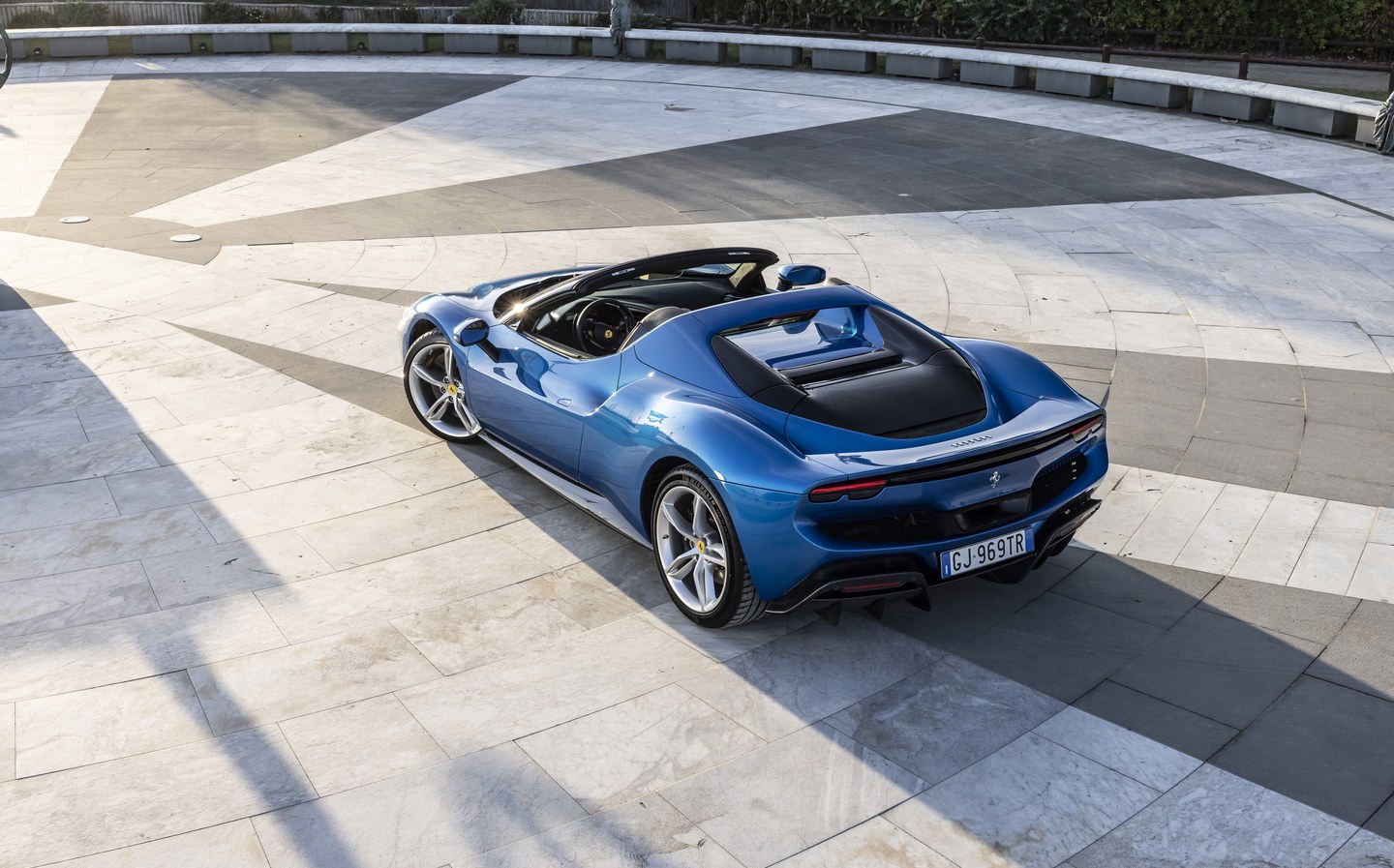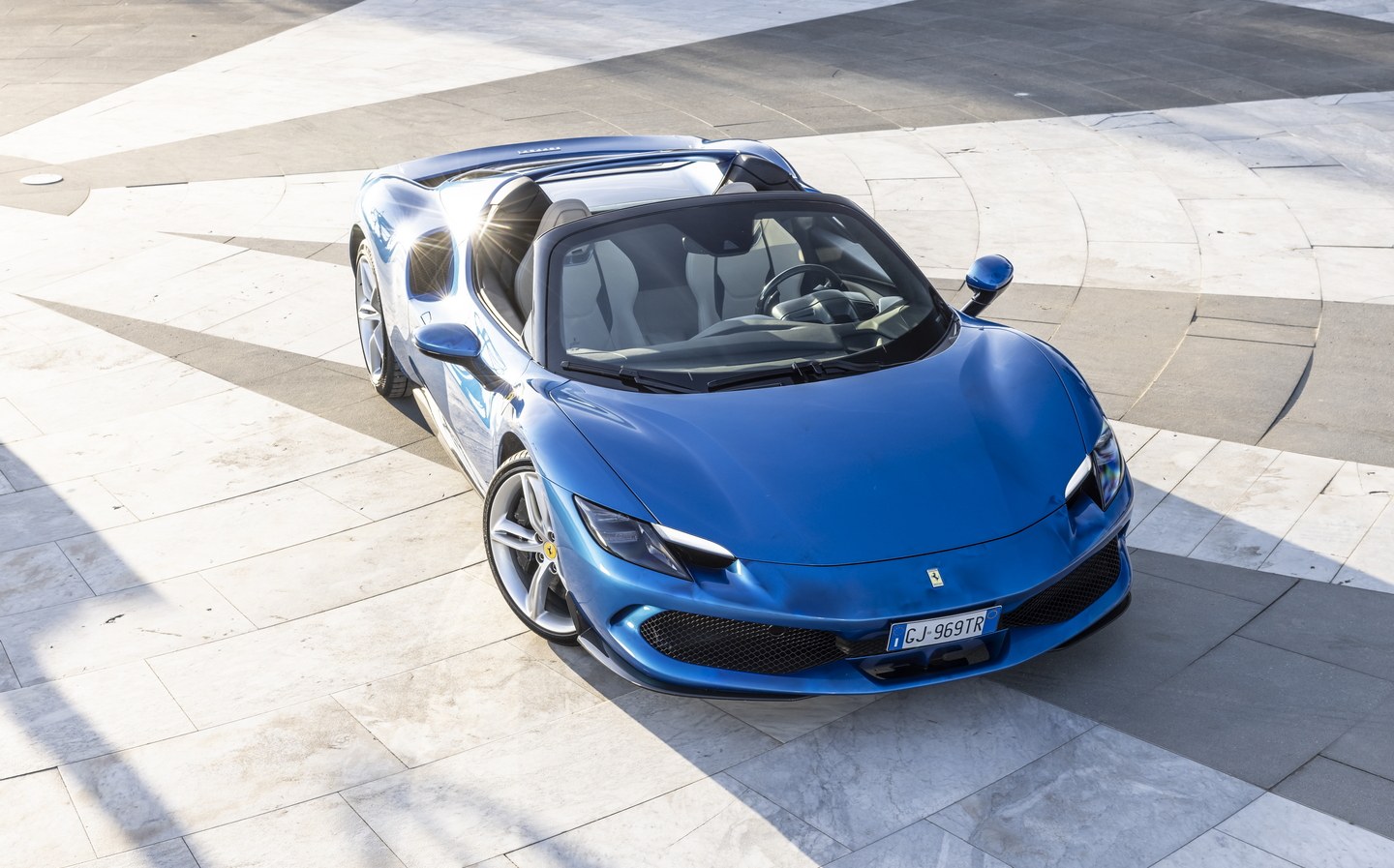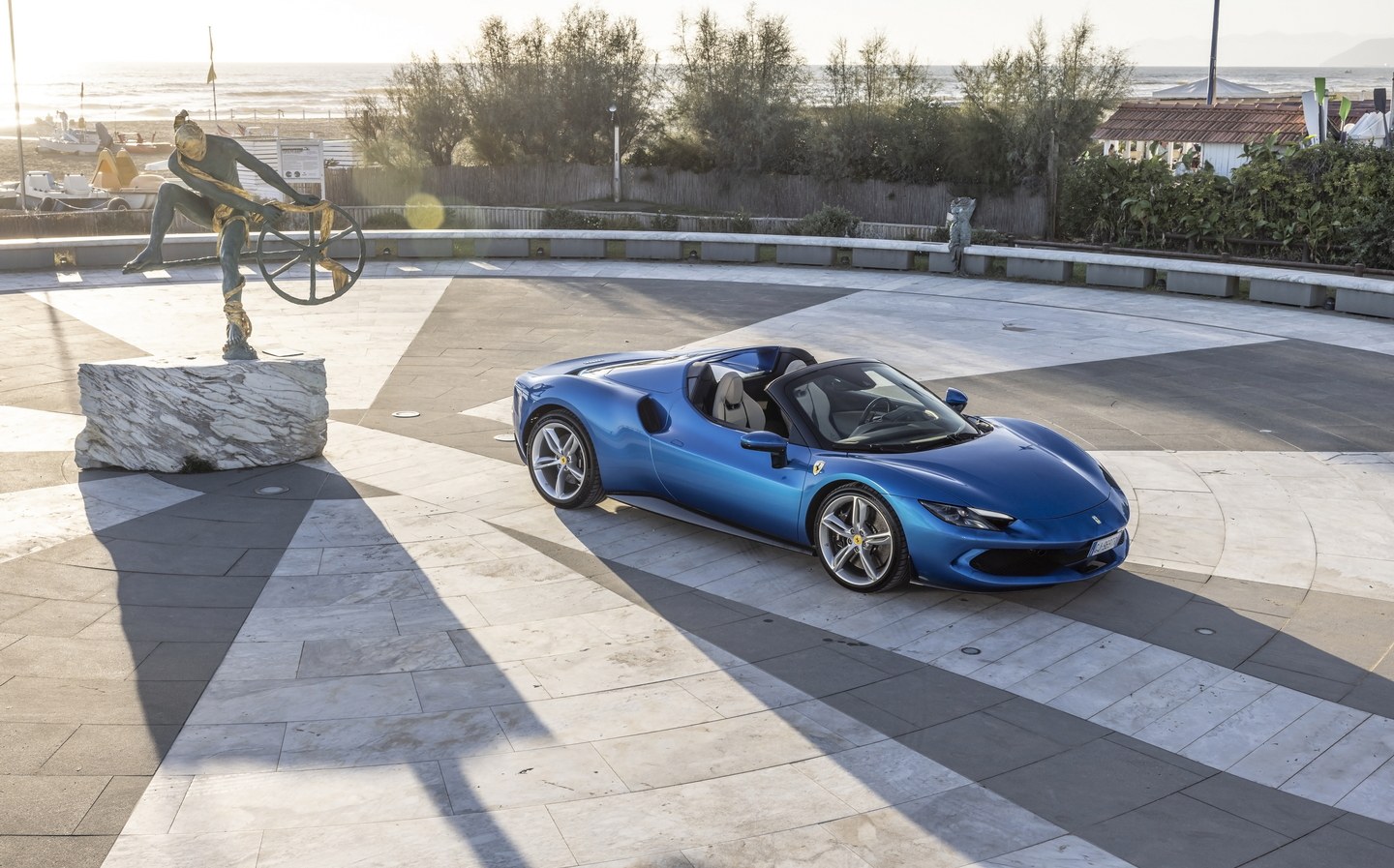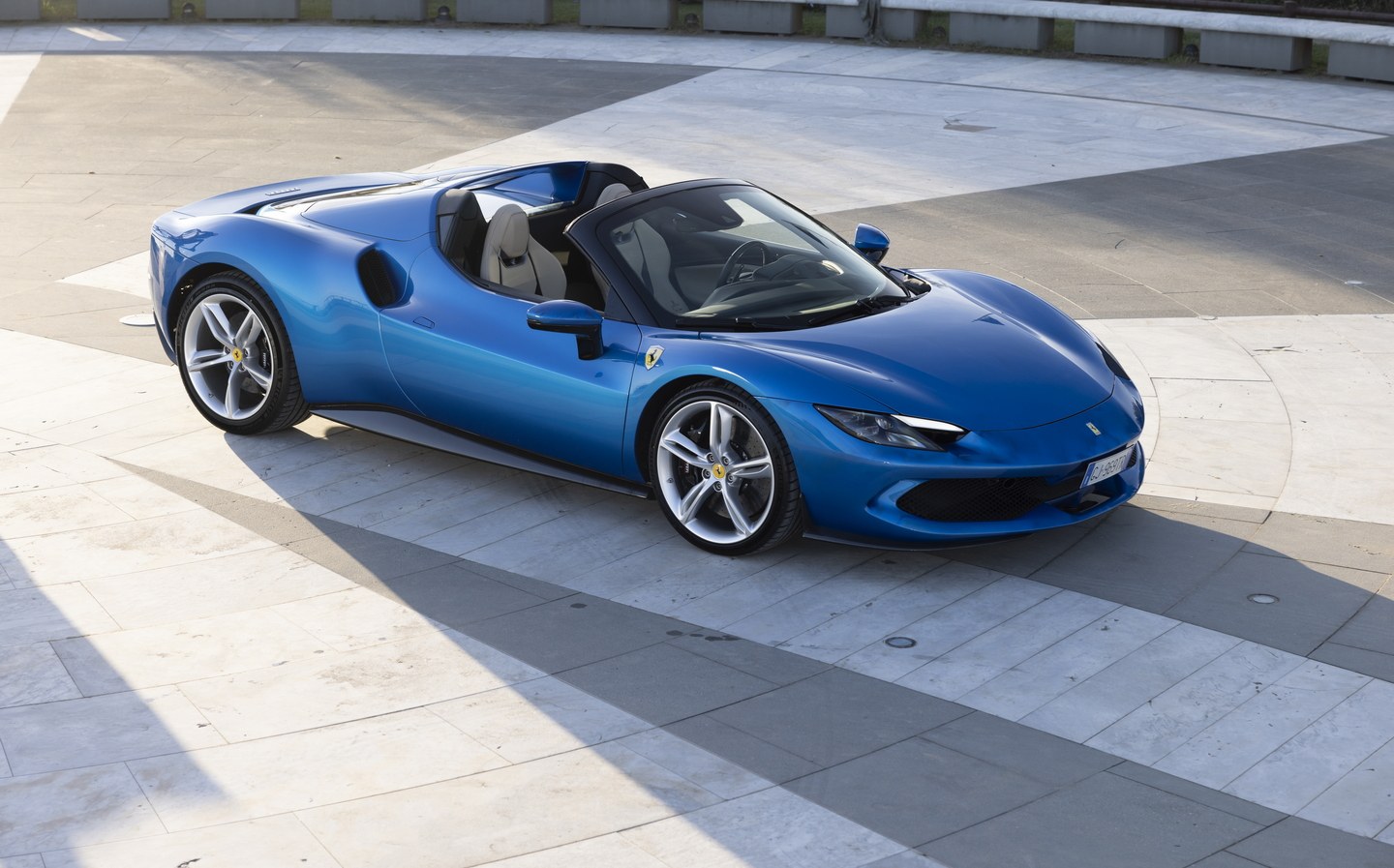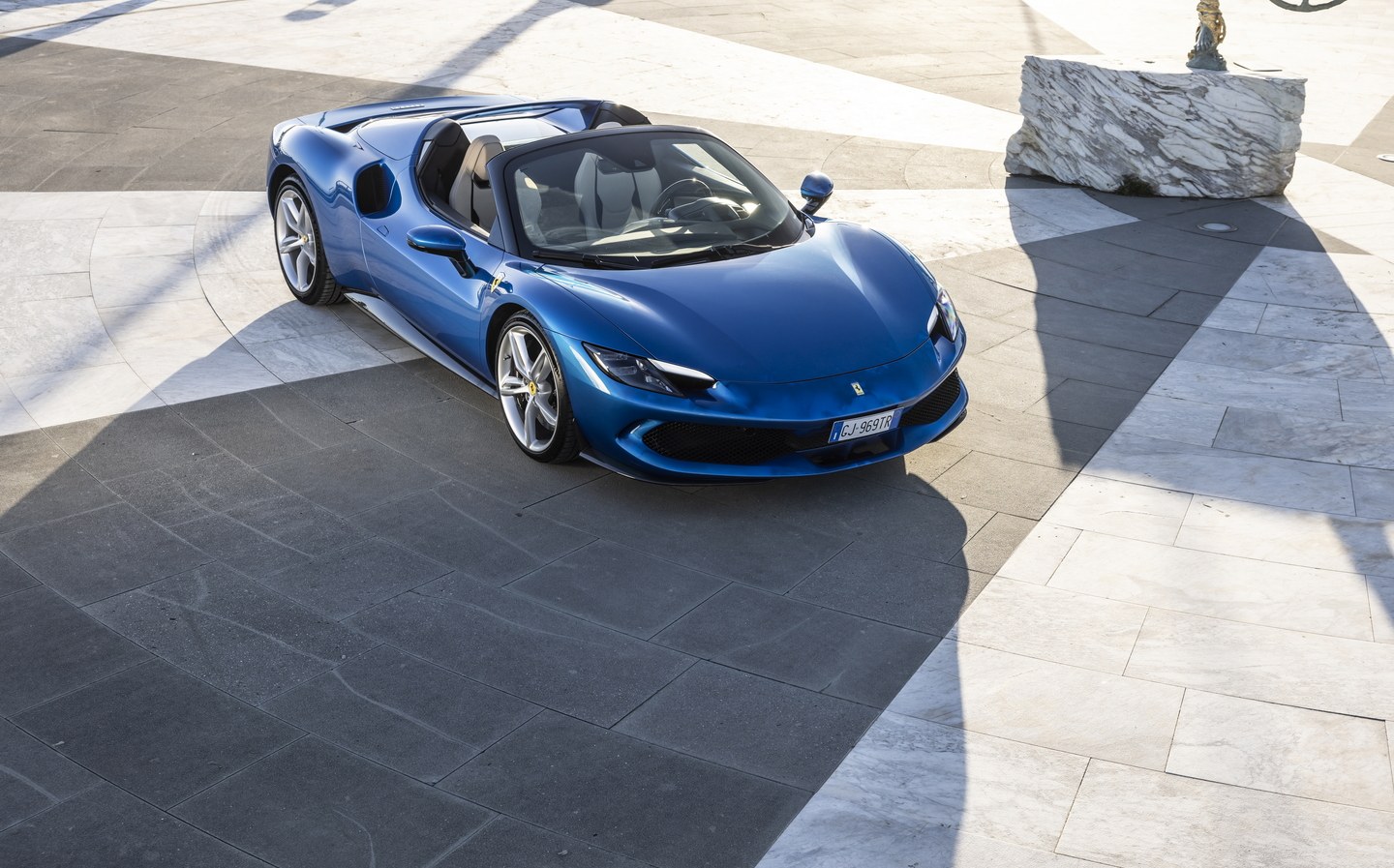Ferrari 296 GTS review: 818bhp hybrid droptop is the ultimate all-rounder supercar
How Ferrari does a hybrid
Ferrari blew our minds with the superb plug-in hybrid 296 GTB, using the brand’s first road-going V6 mixed with clever electrification to produce a truly breath-taking supercar with a remarkably wide breadth of capability.
Now the Italians want to blow away our hairpieces, too, with the launch of the open-topped version: the new 296 GTS. Don’t be fooled by the boulevard cruising image, as it still packs the same 818bhp punch.
Exterior design and rivals
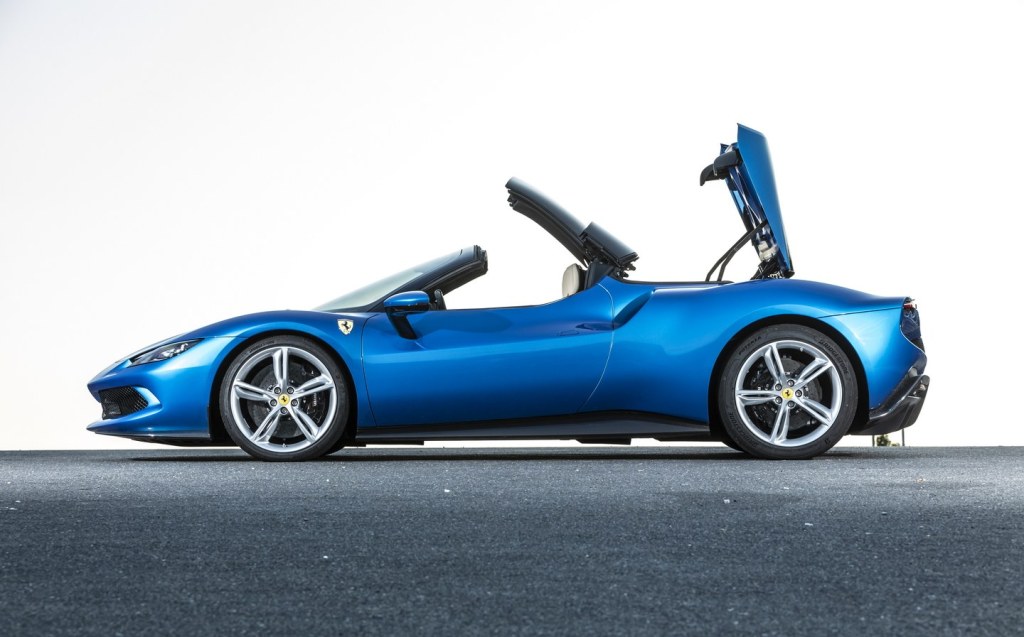
The 296 GTS is more of a targa-style car than a full convertible, as it uses a compact retractable aluminium hardtop. With this in place, it would be easy to mistake the GTS for the GTB coupé – the overall profile is unchanged, even if there has been significant detail design done aft of the cabin to maintain the aerodynamic balance and thermal management of the hybrid system underneath.
In 14 seconds, the roof automatically folds away, splitting into two sections and coming to rest ahead of a glass panel that allows passers-by to gawp at the engine underneath.
Unless, that is, you’re holding the button on the centre console down while on the move, as the process is possible at up to about 28mph. Handy if you’re pulling away from the lights and spot a nasty looking grey cloud ahead.
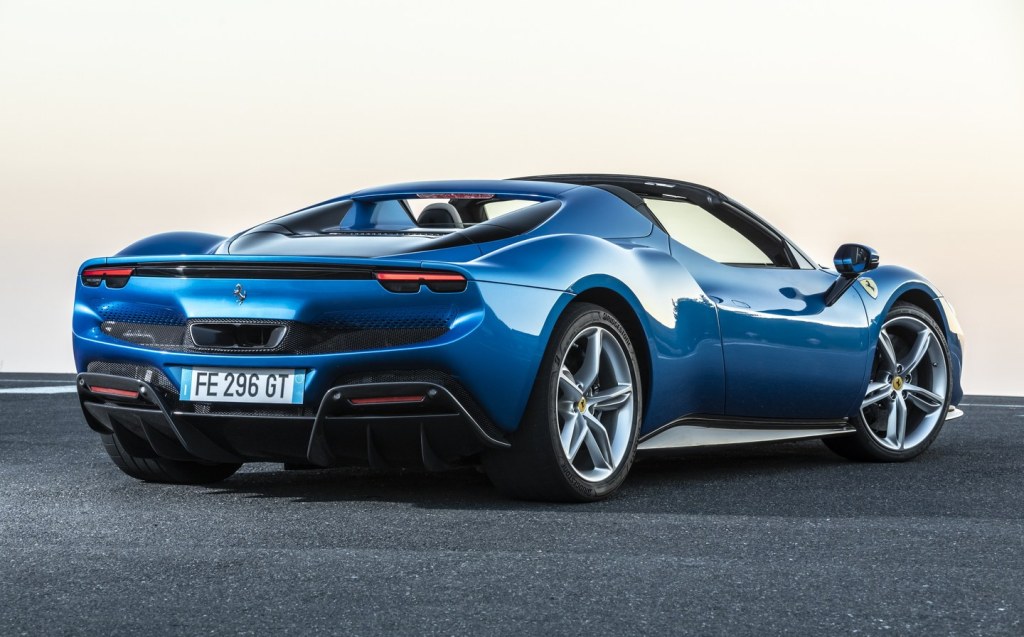
The GTS was part of the 296 product plan from the start, so the rear buttressing and “aero bridge” across the back of the cabin were optimised to reduce buffeting inside with the roof down without changing the design.
Despite our earlier hairpiece gag it’s in fact commendably hairdo-friendly, though if you’re unconcerned with such things, there’s also the option to electrically lower a new glass window directly behind the occupants’ heads, enhancing the open-air feeling and allowing your ears unhindered access to the exhaust and engine sounds behind.
Fans of the retro rear haunches of the 296 GTB will be pleased to see they’ve been carried over to the GTS, and you can see them whenever you glance in the door mirrors.
The rest of the 296’s style is thoroughly modern, with the passenger compartment notably mounted forward and a minimal bonnet up front. The rear end is squat and purposeful, with distinctive lights and a large centrally-mounted exhaust outlet.
While the 296 isn’t – for the most part – styled like most Ferraris before it, it is unmistakably a model from Modena and the ability to take its roof off adds to the glamour.
Interior and practicality
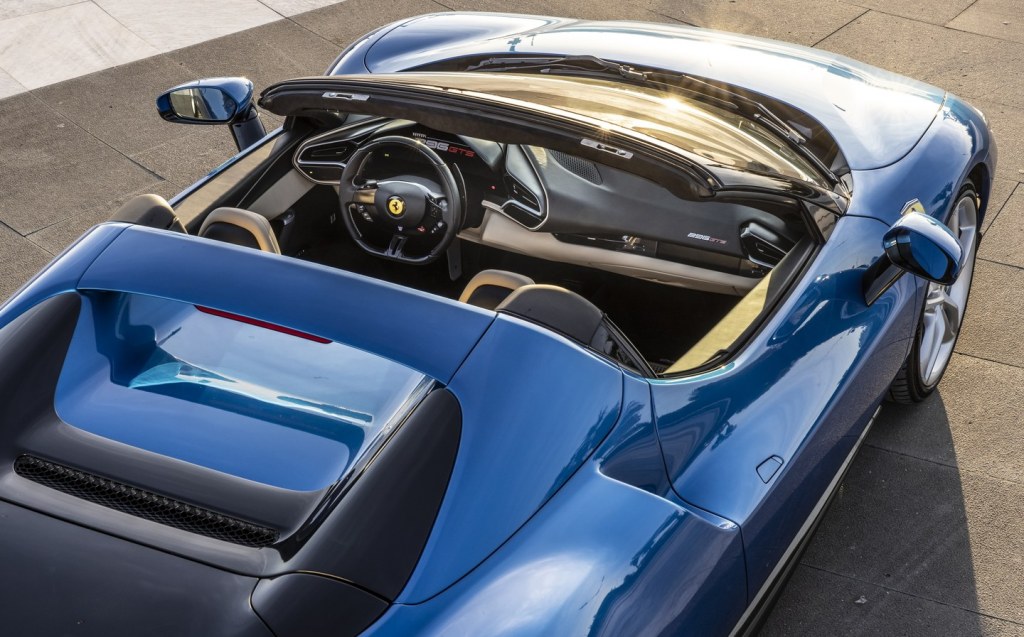
Inside, the 296 GTS is a strict two-seater and, while it’s a cocooning cabin, there’s plenty of space for the driver and passenger thanks to the considerable width of the car and clever sculpting of the door cards, which helps free up extra room for elbows. It’s quite easy to get in or out, though you do sit low down and the seats are quite firm feeling at first. They did, however, prove comfortable after a long day at the wheel.
The digital dashboard looks stunning with its carbon-fibre cowling and high-res graphics, but it all takes some getting used to. That’s mainly because of Ferrari’s penchant for sticking almost all the controls to the steering wheel.
Thankfully there’s a little touch panel to the right of the wheel for the heating and ventilation, but otherwise, owners will have to take time to learn their way around the myriad haptic touchpads and hidden switchgear.

For example, the volume control for the sound system is a tiny little finger wheel behind the left spoke of the wheel, while an innocuous-looking rectangle on the right-hand spoke turns out to be a crucial touchpad to help you navigate your way around the screen.
You soon learn that Ferrari has amalgamated the infotainment and digital instrumentation in one compact unit. It certainly simplifies the appearance of the dashboard but it complicates its use on the move. You need to be Charles Leclerc to master it all. Perhaps the message here for most mortals is: “just drive”.
The passenger gets their own little touchscreen to access various aspects of the infotainment, including the ability to see just how fast the car is going.
In terms of driving controls, there’s a stylised set of buttons for the transmission on the centre console that vaguely look like the open metal gates of old Ferrari manual gearboxes. More impressive are the gloriously tactile gearshift paddles behind the steering wheel. They’re perfectly weighted, too.
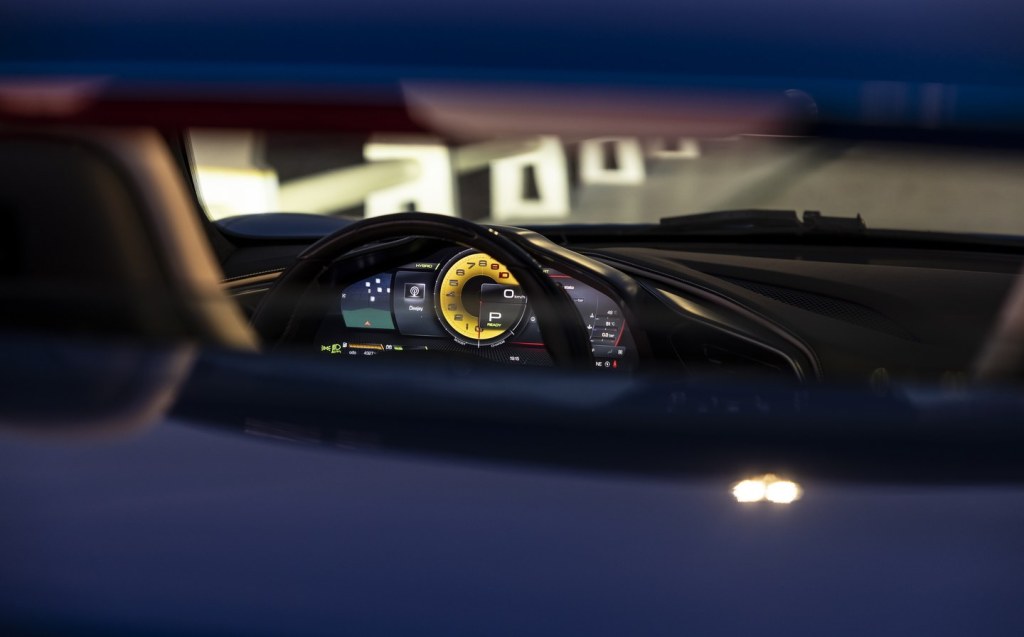
It’s a shame that Ferrari has replaced its satisfyingly solid engine-start button with a touch-sensitive area at the bottom of the steering wheel, but thankfully the chunky anodised aluminium ‘Manettino’ control to switch between driving modes is present and correct.
It’s mirrored by what Ferrari calls the ‘eManettino’ on the other side of the wheel, though this takes the form of a set of seamless touch-sensitive black-panel buttons to allow the driver to choose the hybrid driving mode.
As ever with Ferrari, there’s a bewildering number of upgrade options for the seats, upholstery and cabin to allow buyers to customise them all to their liking. These include new neck warmers, while quite literally thousands of pounds could be spent on extra carbon fibre and Alcantara trim.
Or bespoke Ferrari luggage for that matter. All the better to make full use of the 49-litre storage shelf behind the seats or the 201-litre volume under the bonnet up front.
Technology and safety
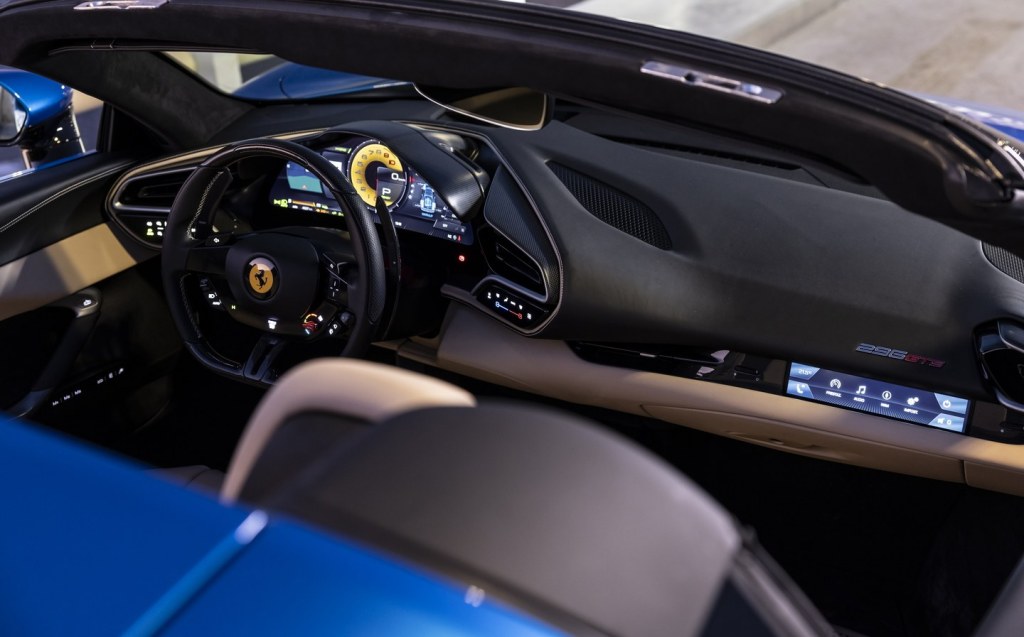
The most impressive technology in the 296 GTS is hidden away and designed to allow any driver to extract maximum performance from the car in any given set of circumstances. For starters, Ferrari takes data from what it calls the 6w-CDS (six-way Chassis Dynamic Sensor). On three axes, this measures the acceleration and the speed of rotation to inform the on-board computers.
Within the electronic Side Slip Control (eSSC) system, there’s a “grip estimator” for the rear tyres working at all times, not just when the car is driven quickly. This uses information from the electric power steering, too. Ferrari claims that the result of all these sensors and calculations is 35% faster grip estimation when being driven flat out on track.
The brake-by-wire system is a bit special, using aerodynamically enhanced callipers and a cooling air feed from holes in the headlights.
There’s an “Evo” function in the anti-lock braking software that’s unlocked in the Race driving mode as well, which works in conjunction with the 6w-CDS to maximise braking force based on the known levels of grip. It also enhances repeatability and even specifically allows a driver to trail-brake to the apex of a corner without the anti-lock system intervening.
Ferrari claims that the 296 GTS reduces the 124mph to zero braking distance by 8.8% (in comparison to the F8 Spider), while also increasing repeat braking efficiency from that speed by a considerable 25%.
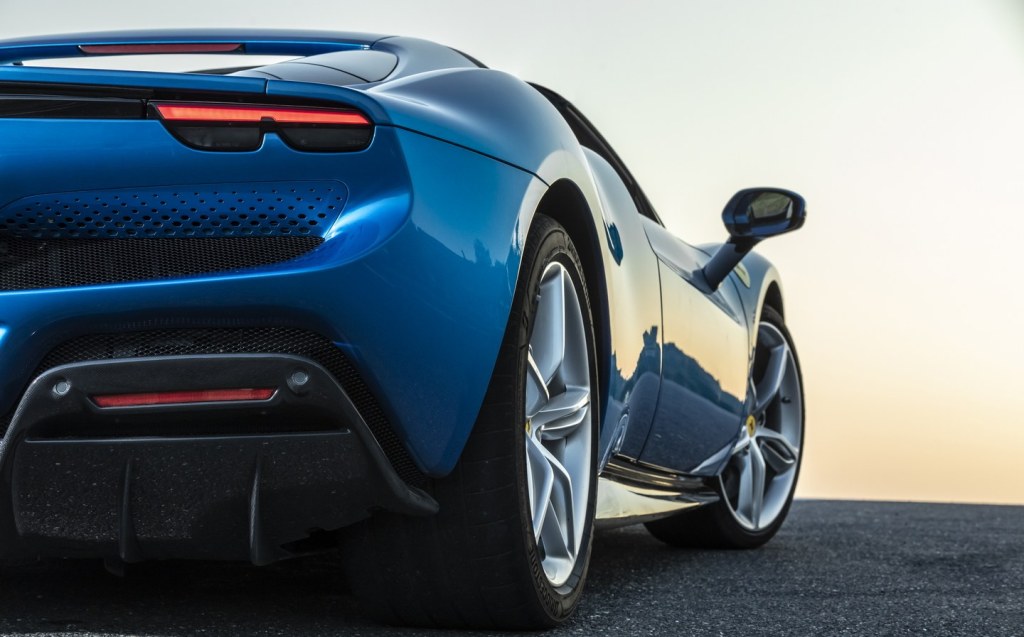
As if that’s not enough wizardry, the regular braking system can be enhanced by switching the electric motor into generator mode and using brake energy regeneration to slow the car and charge up the battery at the same time.
The Transition Manager Actuator (TMA) takes control of this, along with, as the name suggests, the transition from electric power to use of the V6 engine. The best thing about all this technology is that you aren’t really aware of it in operation.
Performance, power output and acceleration
It’s an eerie thing pulling away from rest in a Ferrari supercar in near silence. The electric motor produces up to 163bhp and 232lb ft of torque, so it has no trouble pushing the 296 GTS (1,540kg in its lightest configuration) along effortlessly, easily keeping up with traffic. It can do so for just over 15 miles if you choose the eDrive setting according to Ferrari, but presumably not if you use its 83mph top speed on electric power.

The Hybrid mode is designed for everyday driving, balancing use of the engine and electric motor as the computers deem fit. On a motorway cruise, the engine turns off more regularly than you’d expect.
But this is a Ferrari, and we suspect that most owners will want to hear the sonorous V6 engine at work most of the time. It’s permanently running in the Performance setting, which also aims to keep the battery topped up so that the maximum outputs of 818bhp and 545lb ft of torque are available whenever the driver can make use of them.
In truth, on the public road, that won’t be very often or for awfully long, as this car is monstrously fast. It’s seemingly irrelevant which of the eight gears you’re in or how high the revs are, as response to accelerator inputs is instantaneous.
The twin-turbocharged 2.9-litre V6 engine has been designed for that, of course, but there’s no doubt that the electric motor helps fill in the gaps. It’s seamlessly done, and the GTS is simply rapid at all times. Addictively so.
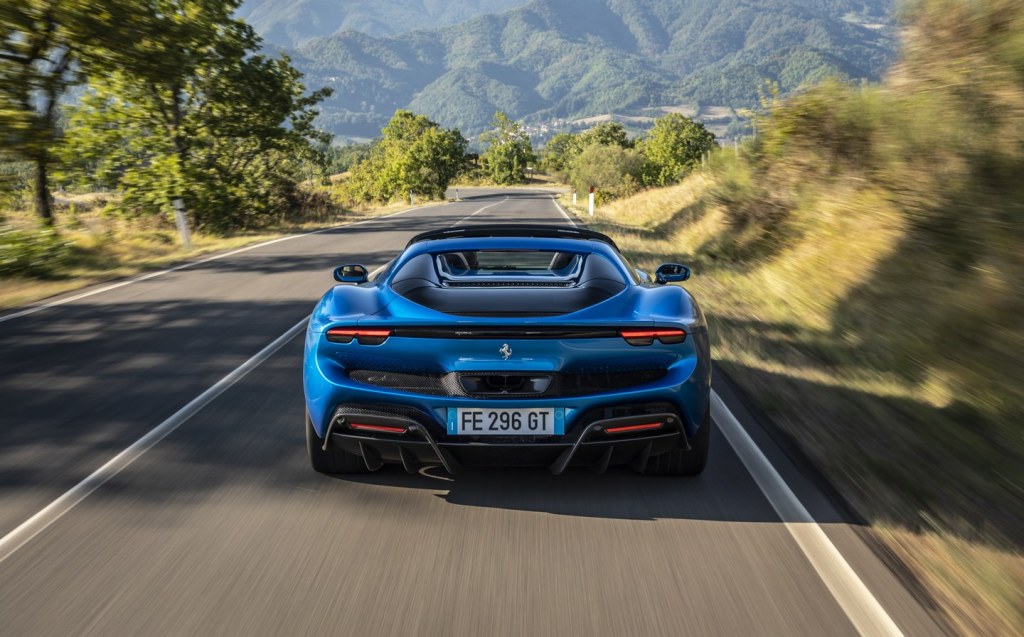
Accompanying this performance is a range of distinctive sounds from the engine and exhaust. Ferrari likes to refer to the V6 as its piccolo (little) V12 as it went to a lot of effort to make it sound like one. There’s something called a “hot tube” taking sound from the exhaust before it hits the catalytic convertors and channelling it to the cabin without having to synthesise it or use the sound system to enhance the noise the occupants hear.
It positively wails as you home in on the heady 8,500rpm redline, while the wastegates of the turbos can be quite clearly heard at work when you lift your foot off the accelerator at lower speeds.
The dual-clutch gearbox is a peach, too, delivering instantaneous response to your finger flicks of the paddles behind the steering wheel. On a twisty road, you’ll change up and down gears just for the fun of it and to hear the engine revs flare.
There’s so much torque and performance on tap that it could just be left in fifth the whole time and you’d still make indecent progress, but where’s the fun in that?
For maximum attack, you’ll be reaching for the hybrid system mode called “Qualify”.
Ride and handling
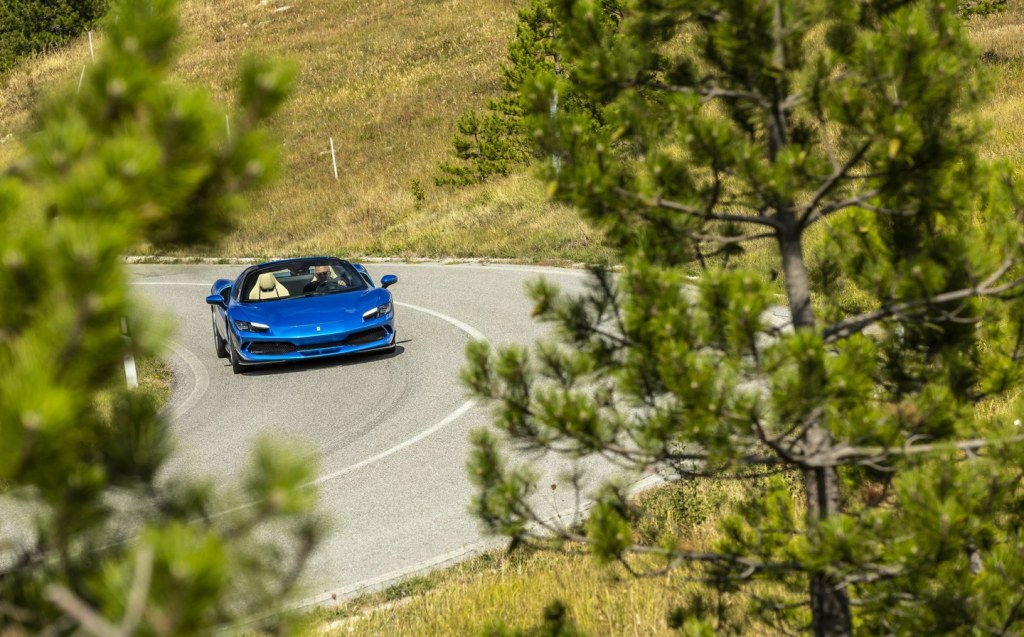
Given the mouth-watering technical specification of the powertrain, and the eyewatering outputs, it would be natural to assume that the 296 GTS is a bit of a handful to drive. The opposite is true. The controls are incredibly well-judged, so ambling about in heavy traffic, for instance, is no chore.
Then, when you get out on the open road it proves to be a tractable and friendly chassis to use, whether you’re pootling along or in a hurry.
Before talking about the exciting stuff, it’s worth pointing out that, despite its undoubted on-track capability, the 296 GTS’s chassis is more than up to the job of normal driving duties. Only when you select the Race setting from the Manettino do the dampers go to their firmest and most unyielding level. And even then, you can push the switch to use the “bumpy road” mode. I
n the Wet and Sport driving settings, the dampers smooth out poor road surfaces and enable long motorway journeys without worrying about how your back will feel at the end of it.
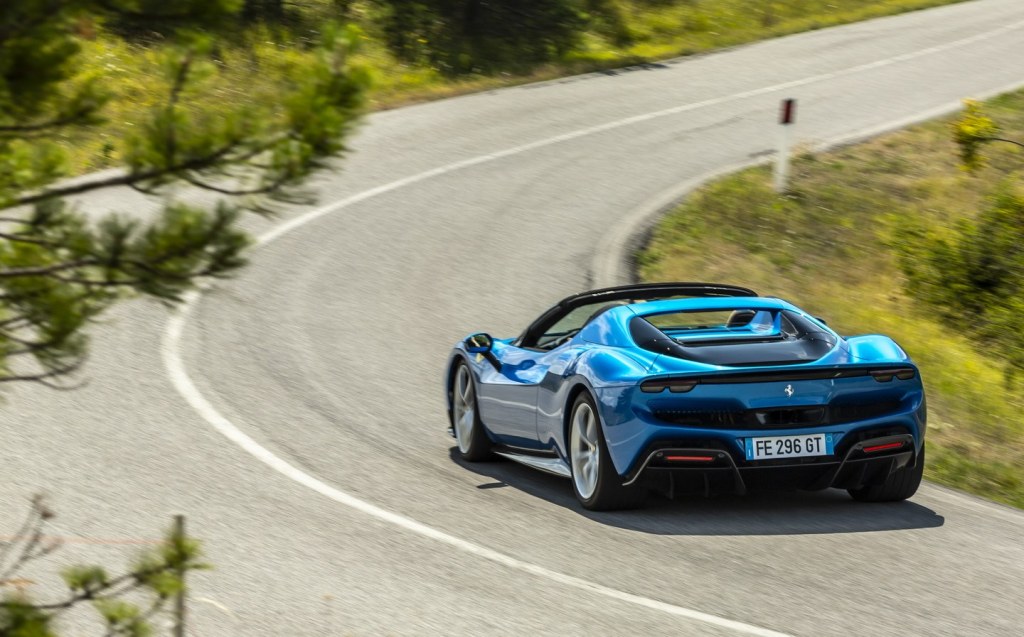
On twisty roads, however, the 296 GTS comes alive. The main driving settings alter other facets of the car, such as the electronically controlled rear differential, and in Race mode it delivers an intoxicating driving experience, perhaps one best kept to a race circuit.
For road use, Sport mode still makes the 296 GTS sensational to drive thanks to steering that is razor-sharp but never nervous, a reassuringly solid – yet easy to modulate – brake pedal, and enormous grip from the tyres.
Despite the inherent ability of the car to corner at otherworldly pace it somehow makes the driver feel like they’re responsible for it all and it’s truly engaging, even when you’re not at licence-losing speeds.
Pricing and on-sale date
Orders can now be placed for the 296 GTS. It starts at £278,893 on the road in the UK, but that really is just a starting place for the price, as every owner upgrades the car to their own preferences.
A generous four-year warranty and seven years of servicing are included in the price, and buyers can add a fifth year of warranty for a reasonable £4,080.
The priciest options to consider include the Fiorano Performance Pack Extended at £25,920 (it’s called Assetto Fiorano elsewhere in the world), stunning carbon fibre wheels at £19,200 and special blue racing stripes — a snip at £14,400.
If you still have money to burn and want something unique, the Ferrari Tailor-Made personalisation programme is awaiting your call. And bank deposit.
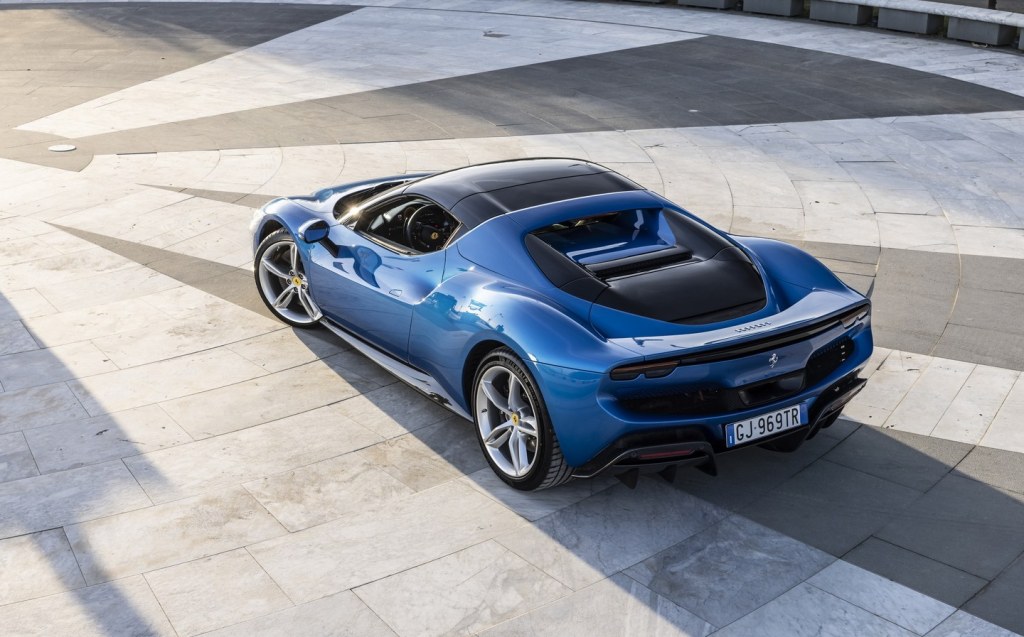
Verdict: Ferrari 296 GTS review
Open-top cars sometimes get looked down upon by the enthusiastic driving fraternity as somehow lesser than their coupé siblings, but even they will have to admit that the Ferrari 296 GTS is virtually indistinguishable from the GTB in terms of dynamics and engagement.
It’s an astounding creation, using its electrification to the benefit of performance while retaining the high level of engagement and usability for which Ferrari supercars have become known. That it can be driven and enjoyed by those of all skill levels, in everyday scenarios as much as on the racetrack is a remarkable achievement.
The same can be said of the GTB, though the GTS is arguably the only one you need, as it offers the option of the wind in your hair whenever you feel the need.
Related articles
- After reading our review of the new Ferrari 296 GTS, you might want to see our review of the McLaren Artura
- Do you think the new Ferrari Purosangue is an SUV?
- Check out our five best supercars to buy in 2022 (this might need an update now, come to think of it)
Latest articles
- Should I buy a diesel car in 2025?
- F1 2025 calendar and race reports: The new Formula One season as it happens
- Zeekr 7X AWD 2025 review: A fast, spacious and high tech premium SUV — but someone call the chassis chief
- Denza Z9GT 2025 review: Flawed but sleek 1,062bhp shooting brake from BYD’s luxury arm
- Extended test: 2024 Renault Scenic E-Tech review
- Best-selling cars 2025: The UK’s ten most popular models of the year so far
- Audi A6 Avant 2025 review: Trusty executive estate ticks expected boxes, and there’s still a diesel option
- Keir Starmer eases pressure on carmakers to sell EVs in response to ‘global economic headwinds’
- Ferrari 12Cilindri Spider review: Heady blend of traditional and futuristic becomes even more intoxicating after lid is removed


